SHOWGIRLS OF THE WEST
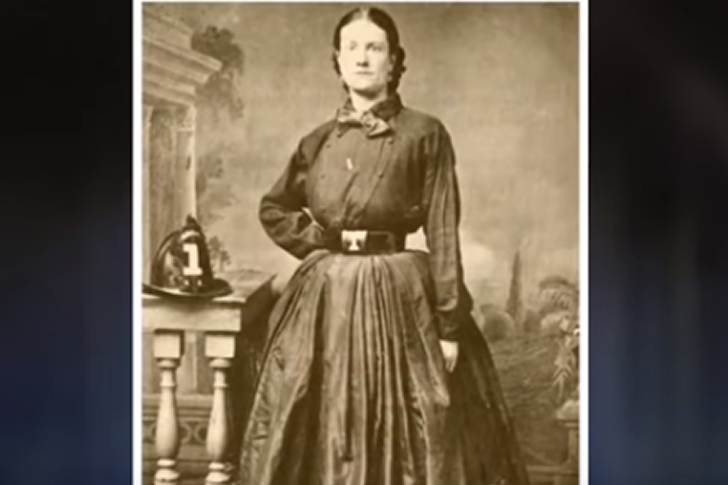
These photos show the dancehall girls of the Wild West. Their job was to spice up the lonely nights of men in town as they would dance, sing, talk, and play games with them. They would, most of the time, invite the men for drinks as this was partly their means of living. For every drink they sold, they would get a commission. The girls would always wear make-up and fancy dresses to attract more customers. The dancehall girls of the Wild West were credited as very popular as this was one of the few forms of entertainment during the time.
WOMEN IN THE WORKFORCE
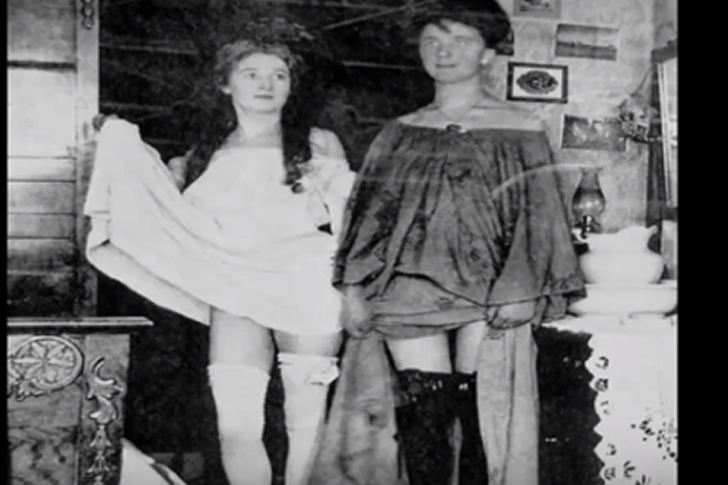
The west is wild enough for the men, but we may wonder about the lives of the women. Well, women in the west were fortunate to have lived there. They were given more opportunities than the others, especially those living in the east. Such freedom given to the west women was their right to vote in elections, and they were also given equal pay as teachers. Several women in the west were credited as trailblazers as they were the first to introduce women’s acceptance into the workforce- musicians, artists, and even rodeo personalities. How momentous is that?
BISON BACK IN THE DAY
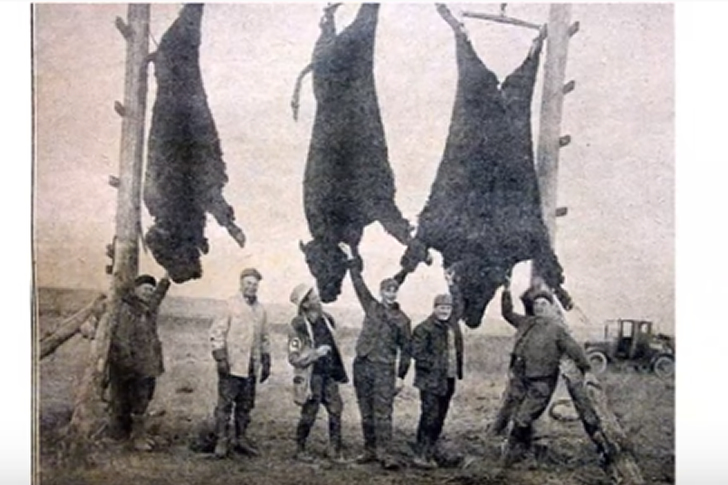
Bison hunting was a fundamental activity in the Wild West, hence, the extinction and decline of the species. Back in the day, bison hunting was the norm, and hunters gather together to kill as many as they can. It was also a source of income for the poor farmers and business investment for the wealthy. Bison skins were used for machine belts, rugs, and robes. The skulls undergo industrial processing to be used as fertilizer, glue, ink, and more. As shown in the picture, these bison skulls were collected and are being prepared to undergo processing.
THE MASK
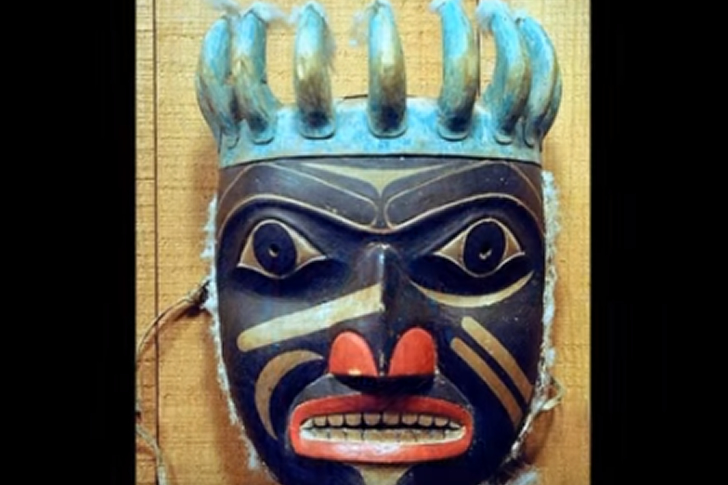
Masks were often displayed in several pictures from the Wild West and it served several purposes. Centuries ago, masks were made for decoration, ceremonies, and rituals. It usually served as entertainment, gifts, and can represent a tribe. It is also a common belief that people must wear masks whenever they go to chase off evil spirits and diseases. Also, Native Americans credited the person wearing a mask as someone taken over by spirits. The color of the mask can also represent a meaning, such examples would be white masks represent light and purity, and the green one represents healing.
AFFECTION IN THE WESTERN DAYS
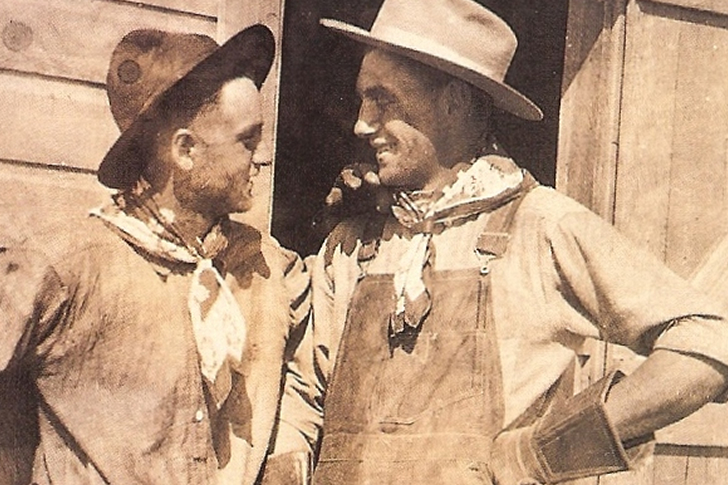
It’s good to know that it was permissible in the Old Western days to display affection even to those of the opposite gender. The picture shows two men sitting close to each other. It is not known whether they’re brothers, relatives, or friends, but the photo suggests that they have a close relationship with each other. In some countries, like India, it is widely acceptable for guys to hold hands with each other. The West may be credited as a macho world, but it isn’t wrong for a man to show affection and express fondness, especially to his beloved one.
CAPTURING WHEELER SURVEY
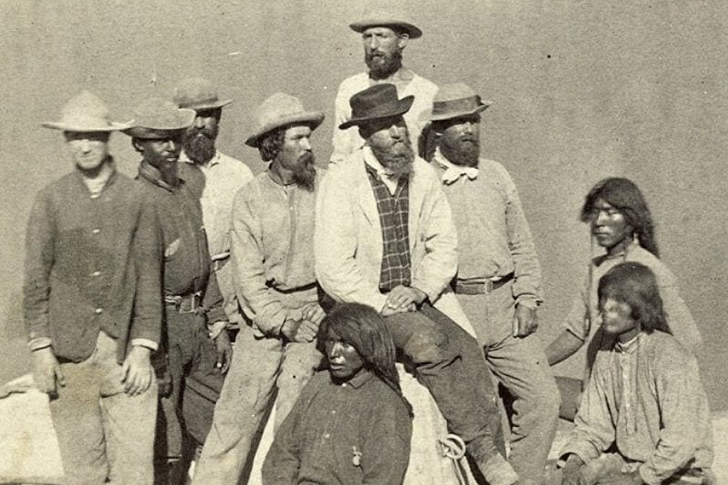
The photo features photographer Timothy O’Sullivan, fourth from the left. O’Sullivan took photographs of each land he and the Wheeler Survey have discovered, and this picture depicts the Colorado River back in 1891. Together with him are his fellow members of the Wheeler Survey and some Native Americans. The Wheeler Survey is a group credited to Captain George Montague Wheeler, whose goal was to make maps of Southwestern United States. The group went on expeditions to discover more about the geology and ethnology of the land. Based on the records, they have published a total of 164 maps.
POCAHONTAS?
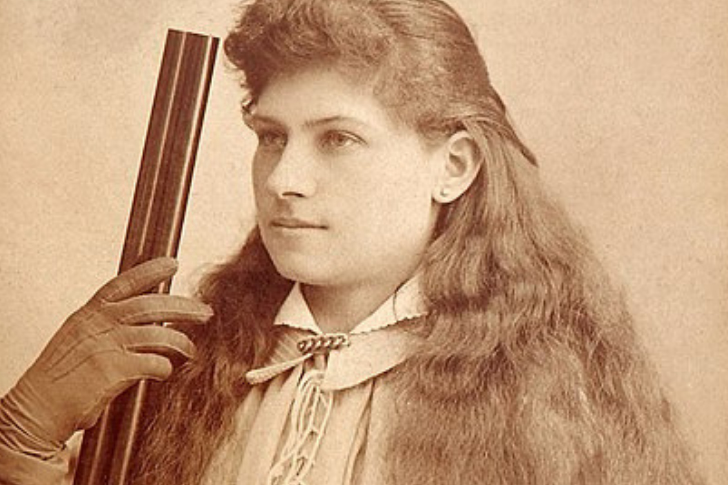
This captivating Native American woman not only shows beauty but also exudes purity and courage. Her features somewhat exhibit the characteristics of the legend, Pocahontas. And indeed, they share the same aura. Native American women in the Old West were credited to be busy managing their homes. They made ends meet by joining the workforce and laboring jobs that have almost the same load as men. Some also participated in wars and fought beside men. They were highly admired for their strong survival skills. We wonder what this beautiful woman’s work was but we are sure that she left a legacy!
GALLOWS FOR THE OUTLAWS
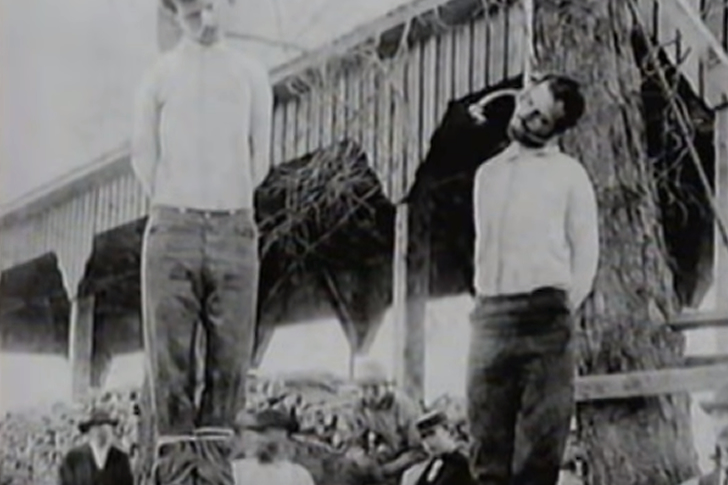
This image depicts a gallow probably being investigated by these men in preparation for hanging an outlaw. The gallow was used to punish criminals, often referred to as outlaws, as a means to exercise justice. The gallow is also proof that law, justice, and order are being practiced in the Wild West. The hangings often took place during the weekends in order to gather more people. It was also credited as a form of entertainment because people would attend and somehow, enjoy. It drew a large crowd back then that the authorities had to give out tickets to keep everything under control.
WILD WEST MUSIC
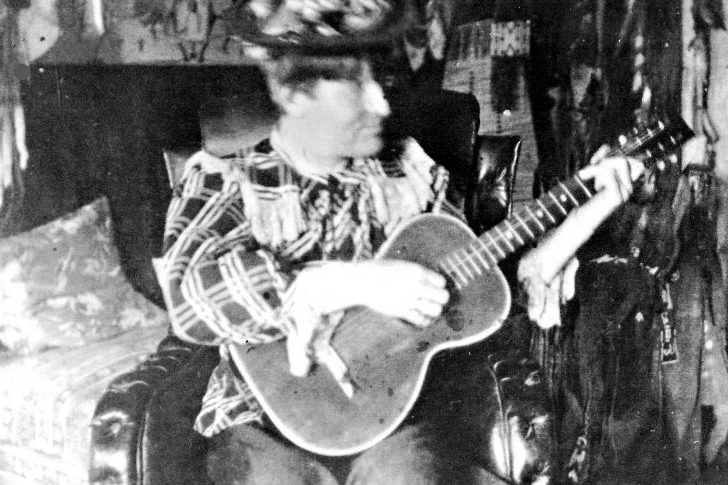
Before magazines and television, there were already several means of entertainment in the Wild West. People from back then have a lot, from dance halls to gambling to brothels. But it is also a fact that people from the Old West are pretty fond of music. Here is a photo of performers gathered together, with one man in the center, probably the lead singer, strumming his guitar. Maybe this was the rise of what we call today “country music”. As credited in most Western films, cowboys and ranchers are keen on hillbilly and folk music.
THE LONE WOLF
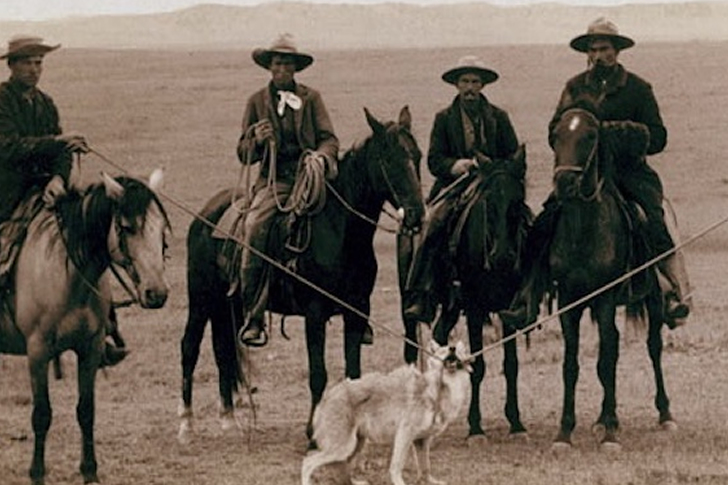
The Wild West boys were great enthusiasts when it comes to hunting. Aside from bison, they also hunt other animals that they deem dangerous. An example is a wolf seen in this photo. Wolves are credited fierce and wild, posing fear and threat to human safety. Wolves can also cause rabies to humans, hence, the men tied up its mouth to render them defenseless. It can be assumed that the hunters in this picture are looking for animals to hunt to have a food supply. Hunting animals such as deer, turkeys, and other animals were their usual work as well as a leisure activity.
INTO THE WILD
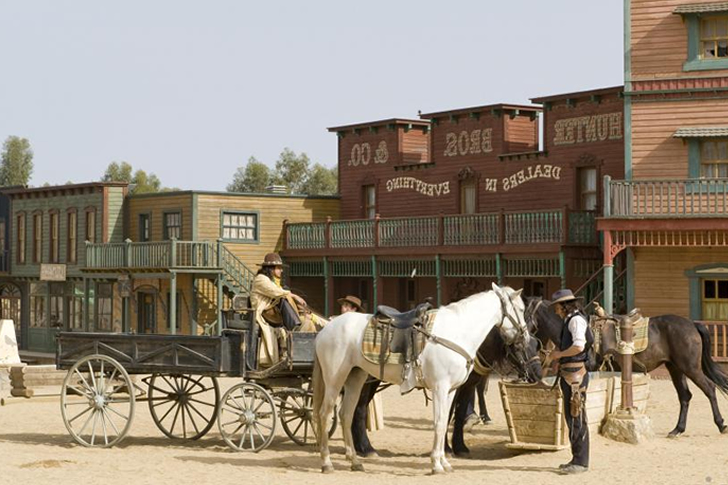
Traveling in the Old West was a very long and tiring journey. Not because there were no fast means of transportation, but also because the road maps were still scarce and incomplete. Their travels were either due to migration, business, or expedition. There were also instances that traveling became dangerous because there were several territorial Native American tribes. One case was the Oatman family’s murder, credited to the Yavapai tribe. This photo may recount a family of three generations migrating to who knows where. It seemed that all twelve of them were able to fit in one carriage.
THE NOTORIOUS BILLY
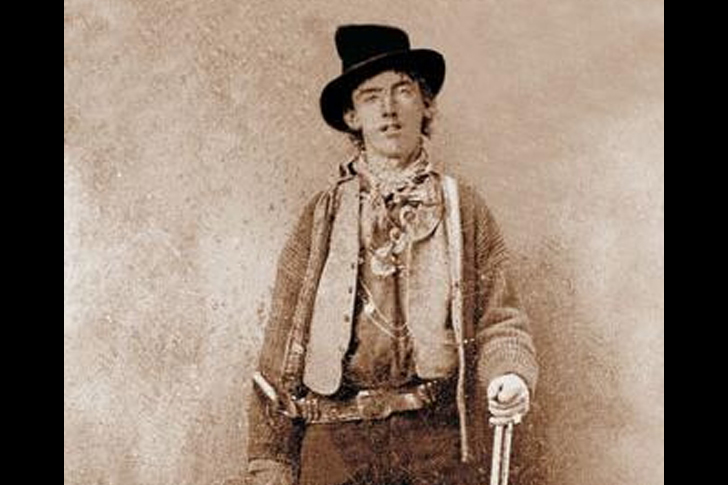
Billy the Kid was an outlaw in the Old West. He became famous for killing eight men and was known to have committed three other murders as well. Billy the Kid started to commit crimes when he was young. Based on records, he was arrested several times for stealing food and robbing a business at the young age of 16. His notoriety became widespread when he killed two of the sheriff’s deputies in order to escape prison. The governor put a bounty for his capture. Sheriff Garrett was credited as the man who killed him, and Billy the Kid was only 21 years old when he died.
NATIVE AMERICANS’ PARADE
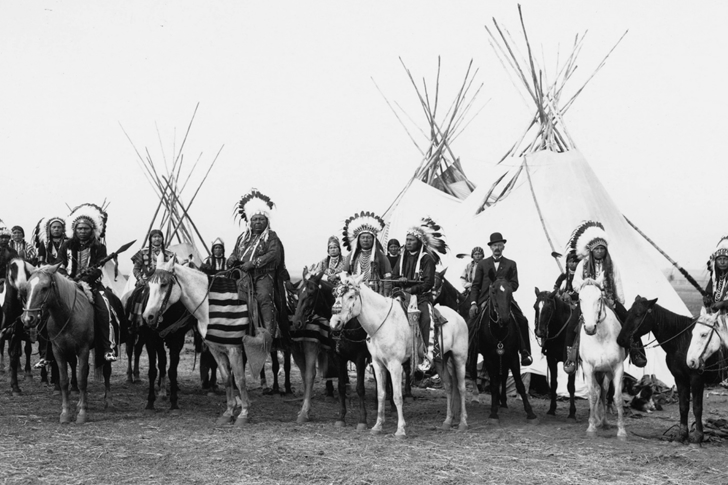
The Native American chief led the way as his group rode their horses to present themselves before the Wild West show began. Maybe a parade was credited as a tradition in the Old West, or just like how any other show starts, all prominent people or stars are to present themselves before the audience. It is for the reason of introducing themselves and welcoming the people that will be watching the show. This picture was captured in Boston, and the reason why we suppose that this was a Western show is that the ground beneath the chief’s horse is a wooden platform.
DEADWOOD COACH
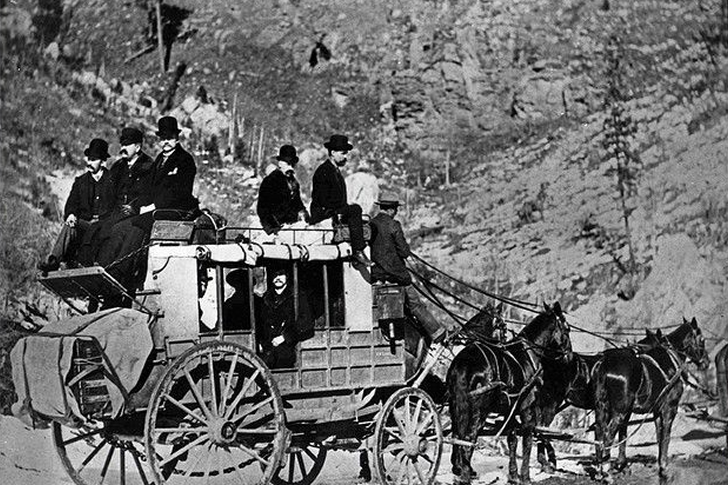
This image shows the Deadwood Coach, credited to photographer John C.H. Grabill. This coach is probably the most popular one since it was used centuries ago. It displays the frontier life and represents the traveling men of the Wild West. It carried Buffalo Bill, among other passengers, who is a famous showman known for putting up Wild West shows with cowboy themes. Buffalo Bill traveled all over the United States, Great Britain, and Europe, taking his large company on tours to perform shows. The coach is still preserved to this day and is displayed in the Buffalo Bill Historical Center in Cody, Wyoming.
GUNSLINGING WOMEN
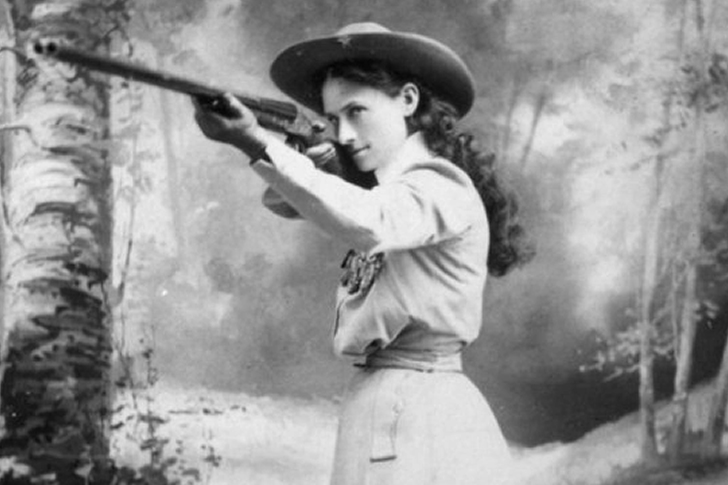
People from the Wild West had gained a reputation for being dangerous, holding guns at all times, and participating in gunfights. But it is not only men who engage in shootouts. Women also learned how to use guns, and some even excel at it. It is because the Old West was at an alarming state when newly-settled Americans were threatened by the attack of Indians. So women learned to defend themselves, especially when left alone at home. Popular lady gun-slingers include Calamity Jane who rescued people from Indian attacks, and Annie Oakley, credited as the sharpshooter, who joined Buffalo Bill’s Wild West Show.
GOLDIE GRIFFITH
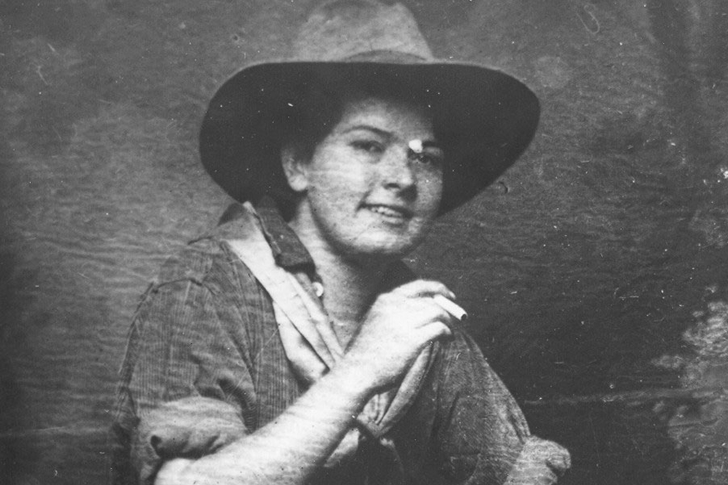
Goldie Griffith is a renowned cowgirl and credited as one of the first professional female athletes in the US. She was part of Buffalo Bill’s Wild West Show and was a famous boxer and wrestler, known to challenge others and put on bets. She also became an actress and stunt rider for new Western films. It was known that Goldie got married at Madison Square Garden with 8,000 people in attendance. She also owned several restaurants in Colorado, applied to be the first policewoman in San Francisco, and trained dogs for the war. Is there anything else this brave woman cannot do?
GENERAL CUSTER
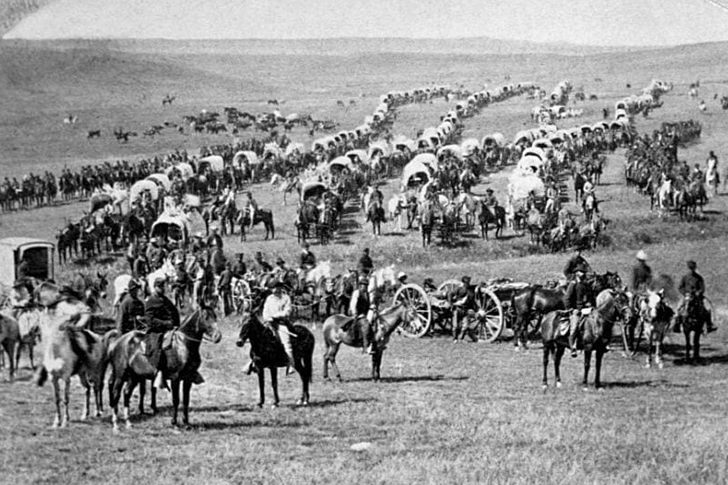
This photo shows General Custer and his troops, probably preparing for a battle. General Custer was a United States Army officer and commander, credited for his leadership in the American Civil War and the American Indian War. He is most famous for his command at the Battle of Little Bighorn in 1876. Unfortunately, he lost both the battle and his life. He suffered two bullet wounds, one near his heart and another in his head. His body was found in the Custer Hill, alongside the dead bodies of his troops and their horses. The dramatic event was known as “Custer’s Last Stand”.
THE GYPSY

Fortune-telling was a popular pastime and became a high demand in the Wild West. This photo shows a woman who is a fortune teller, probably belonging to the ethnic Romani tribe, or what we call as Gypsies. The Gypsies drew attention by wearing colorful, floor-length dresses, heavy makeup, and long hair; a way for them to attract customers for their psychic readings. They used different methods such as tarot card readings, palm reading, and crystal balls. People would go to Gypsies when they are searching for fortune. Even the wealthy would use their investments to consult the Gypsies about their future luck in business.
DODGE CITY PEACE COMMISSION
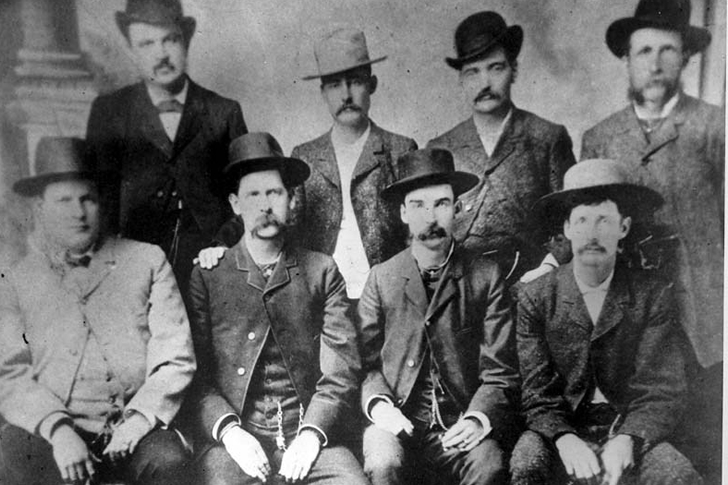
Outlaws in the Wild West grew in numbers, and one of the places in the Wild West where crime rates grew high was Dodge City, Kansas. A cowboy and gambler named Luke Short purchased a saloon in the lawless Dodge City, but his business investments were deeply affected during the Dodge City War. His friend, Wyatt Earp, was led to gather a group of gunfighters and create a commission to support him against the notoriety, and to bring law and order in the city. They were called the Dodge City Peace Commission in 1883. Its members can be seen in the photo.
LOUISA EARP
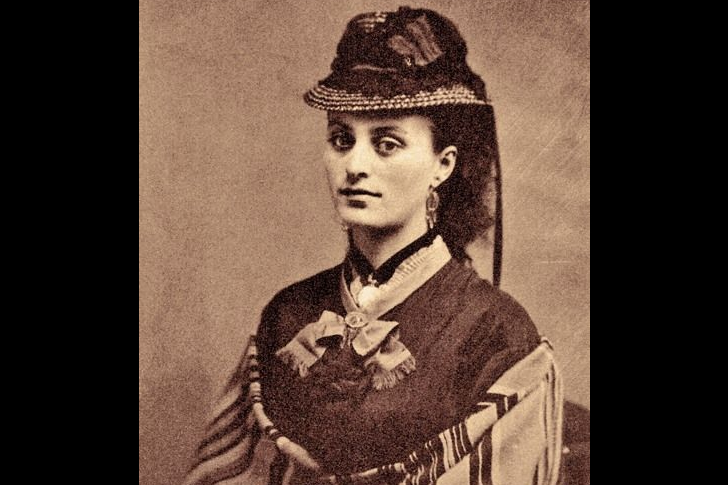
Louisa Houston Earp was the wife of gunfighter Morgan Seth Earp, the brother of Wyatt Earp. Louisa, or Lou, was the second eldest of twelve children. She was described by her sister-in-law as “a fine person, a clever young lady, who was well-educated.” Lou was credited as one of the Harvey Girls or waitresses from Fred Harvey’s restaurant. She met Morgan in Dodge City and a year later, they got married and shared a home in Miles City, Montana. The tragedy happened when Morgan was murdered in Tombstone, Arizona, and his widow, Lou, later died of rheumatoid arthritis at 39 years old.
THE OUTLAW THAT WAS KILLED BY AN OUTLAW
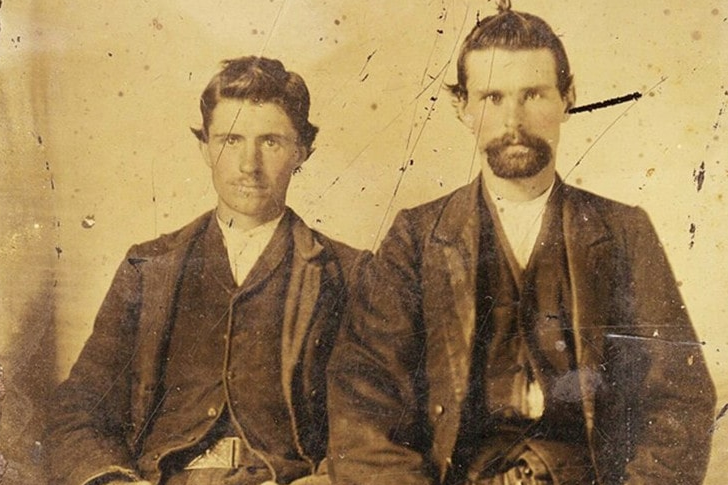
If there is one outlaw that stood out in the Wild West, that would be Jesse James. James is the leader of the James–Younger Gang. He gained sympathy because he was credited as the Robin Hood of the Wild West, stealing from the rich in order to give to the poor. The James–Younger gang robbed banks, stagecoaches, and trains across the Midwest and in different states such as Tennessee, Missouri, Kentucky, Kansas, Minnesota, Iowa, Texas, Louisiana, Alabama, Arkansas, and West Virginia. James died in 1882 when he was shot by his gang member and fellow outlaw, Robert Newton Ford. They are the men in this photo.
DOC SUSIE

Susan Anderson earned her degree in medicine from the University of Michigan back in 1897 and became a licensed physician. She was one of the first women to practice medicine in Colorado, where her family from Kansas moved to. To find work, Anderson moved to Fraser, Colorado, and was the only doctor in town. She was called “Doc Susie” by residents and she treated patients who get skiing injuries or pneumonia during the 1918 flu pandemic and other diseases. She even performed childbirth. Anderson died in 1960 at the age of 90, and in 1997, she was instated into the Colorado Women’s Hall of Fame.
THE ONLY FEMALE PRISONER
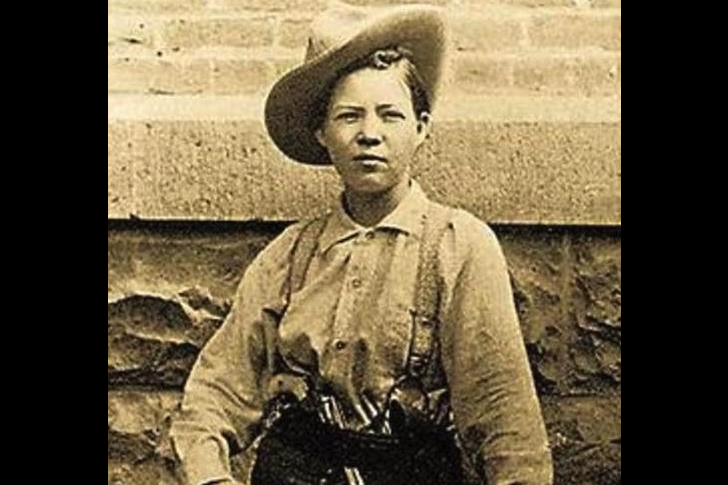
One woman in the Wild West era set the records for having been credited as the only known woman inmate at an all-male facility. Pearl Hart committed one of the last recorded stagecoach robberies in the US. Records say that Hart embarked on a life of crime for she was desperate in looking for money to treat her seriously ill mother. She was in and out of prison and gained fame for being the only female prisoner at the time. After leaving prison, she mysteriously disappeared from public view. Hart’s life was often the subject of some of today’s films and musical plays.
GOLD RUSH
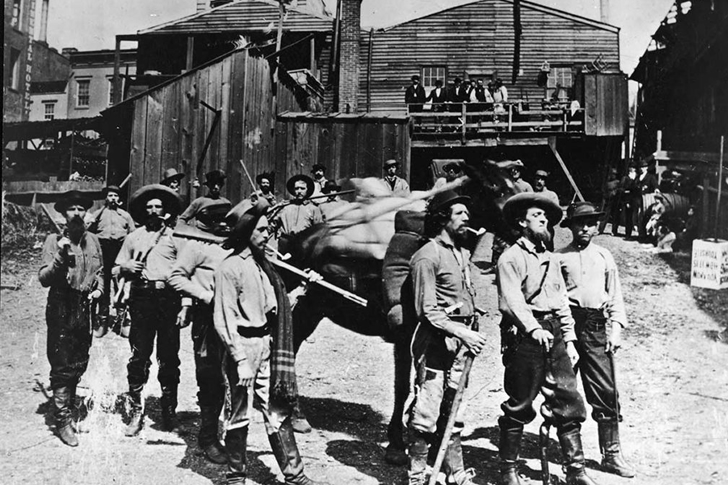
Wild West residents were gearing for their search of gold in the Northwestern United States. Wearing their cowboy hats and holding what looked like canes and maybe shovels, they are on the quest for fortune. This photo was known to have been captured in 1867, but the peak of the California Gold Rush took place for 7 years, from 1848 until 1855. The phenomenon was credited to James W. Marshall, who first found gold in Coloma, California. It brought a sudden influx of hundreds of thousands of people who journeyed to California and developed to the American economy.
WILD BILL FROM THE WILD WEST
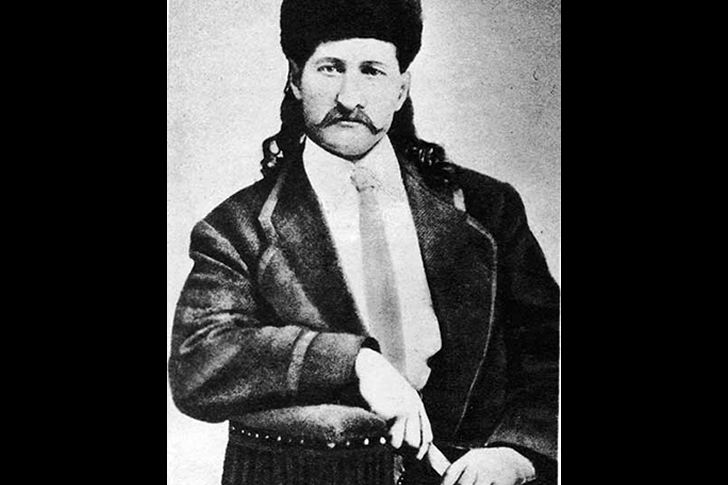
This photo shows James Butler Hickok or popularly known as “Wild Bill”, who was a folk hero in the Old West. He was a prominent man due to his jack-of-all-trades ability. He was a soldier, lawman, showman, actor, gunfighter, and professional gambler. He spied for the Union Army during the American Civil War and took part in numerous shoot-outs. While playing poker in Dakota, he was shot from behind by an unsuccessful gambler. His tragic demise became famous as he was holding a poker combination of two pairs – two black aces and eights – now credited as the “dead man’s hand.”
THE LOUISIANA PURCHASE
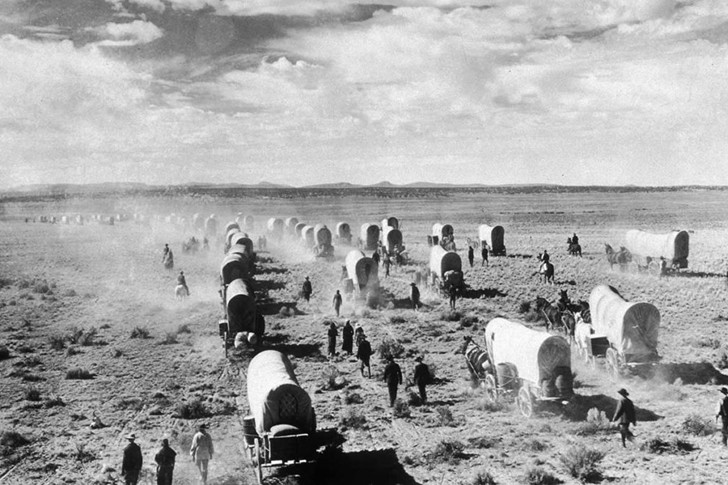
The Louisiana Purchase in 1803 was the United States’ acquisition of the Louisiana land from France for fifteen million dollars. The photo depicts hundreds of Americans traveling to Louisiana in search of a fresh start and of course, a new home. They built new communities and had investments in starting their own livelihood. Thomas Jefferson played the key role in the purchase since he was the American president at the time. The Louisiana Purchase Treaty was signed in April 1803 in Paris. In October 1803, the United States Senate authorized Jefferson to take possession of the territory.
WELCOME TO LOUISIANA
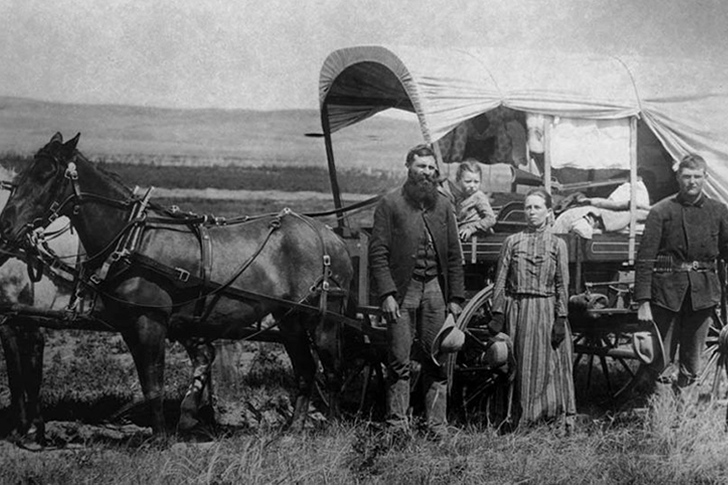
The picture shows a family of five standing in front of their wagon. We presume that the new settlers captured this in 1886 for their memorabilia while they were heading West, as they were about to start anew in the land of Louisiana. The Louisiana purchase was a significant mark in the history of the United States as it added 828,394 square miles to its territory and doubled its size. The French Emperor, Napoleon Bonaparte, sold Louisiana to U.S. President Thomas Jefferson because France is under the threat of bankruptcy, and they needed more resources for battle in the Great French War.
SIERRA NEVADA
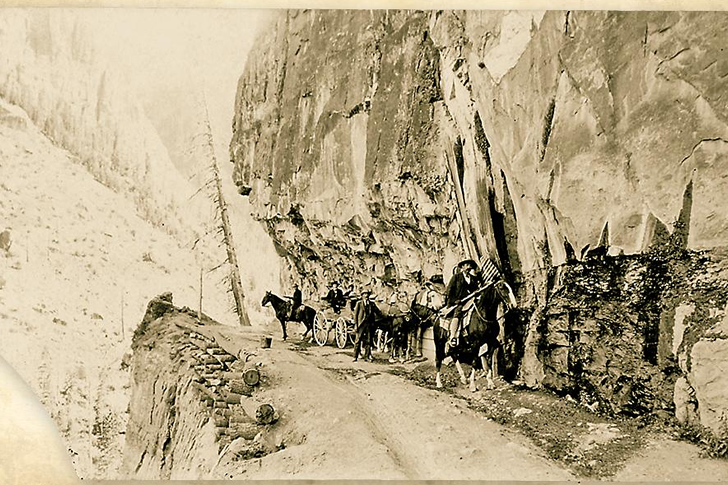
This image was captured in the 1900s in the Sierra Nevada Mountains. The mountain is located in the eastern part of California and stretches 400 miles or 650 kilometers. It is also credited as the Sierra or the High Sierra. The photo shows men riding in their coach and traveling on nearly perpendicular and rugged mountain roads. We conclude that the one seated at the back was a man of prominence, as he was guarded by two armed men riding on their horses. The backstory of this photo still remains a mystery to us as the complete details were never found.
THE INFAMOUS BELLE STARR
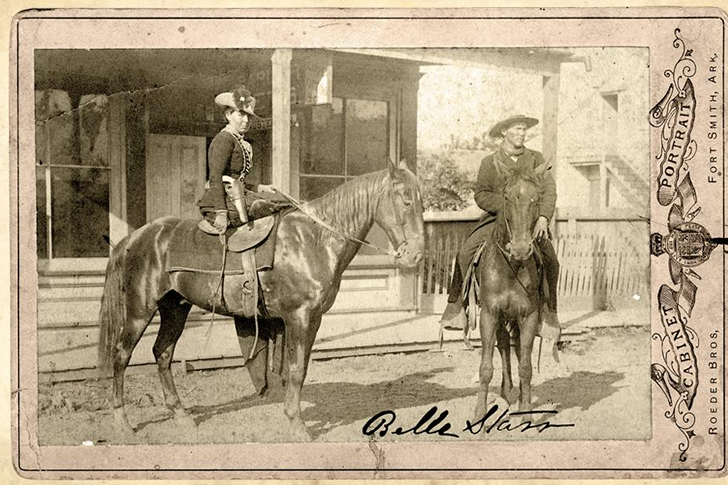
Myra Maybelle Starr, better known as Belle Starr, was one of the women outlaws in the Wild West. She was popular because of her association with criminals including James–Younger Gang and several other outlaws. In 1883, she was convicted of stealing horses and was sent to prison. In 1889, she was ambushed in Oklahoma, later on, she died of shotgun wounds to her back, neck, face, and shoulder. No one knew who killed her. In that same year, her life story was turned into a novel entitled Bella Starr, the Bandit Queen, or the Female Jesse James. The novel was credited to author Richard K. Fox.
CANYON DE CHELLY
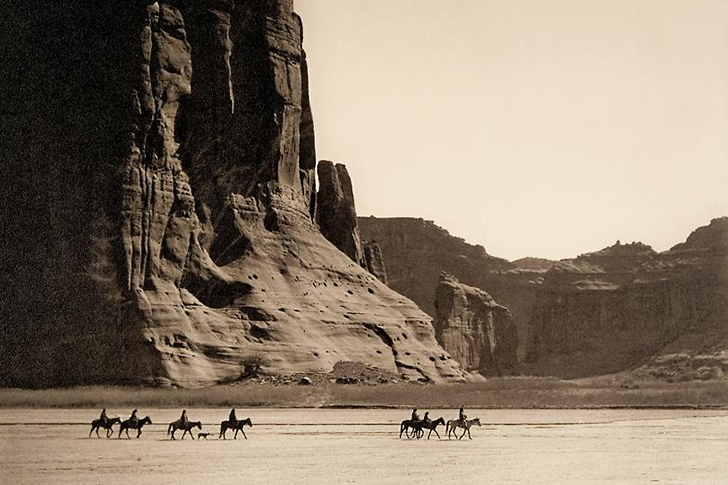
Five thousand years ago, people have lived in Arizona canyons. From the early Puebloans to the Hopis, the canyon has been a sacred refuge to the tribes of Wild West including the Navajo families. As seen in the photo, the Canyon de Chelly is a huge place for Navajo riders to go around. To preserve archaeological resources and the culture, the Congress in 1931 authorized 84,000 acres on the Navajo Nation; leaving the Navajo families to multiply, build homes, farmlands, and raise livestock. The partnership between the government and Navajo Nation is now credited as the Canyon de Chelly National Monument.
ROSE OF THE WILD BUNCH

Another Old West outlaw is Laura Bullion. She had a bad reputation in the 1890s because she was a member of Butch Cassidy’s Wild Bunch gang. She was credited as “Rose of the Wild Bunch”. Bullion was also associated with numerous criminals, including her relationship with outlaw Ben Kilpatrick, who was a bank and train robber. In 1901, she was convicted and sent to prison for being involved in the Great Northern train robbery. In 1905, she was released and was known to have retired from robbery. She moved to Memphis, Tennessee in 1918 and supported herself as a dressmaker while using a different name.
MISS DUMONT
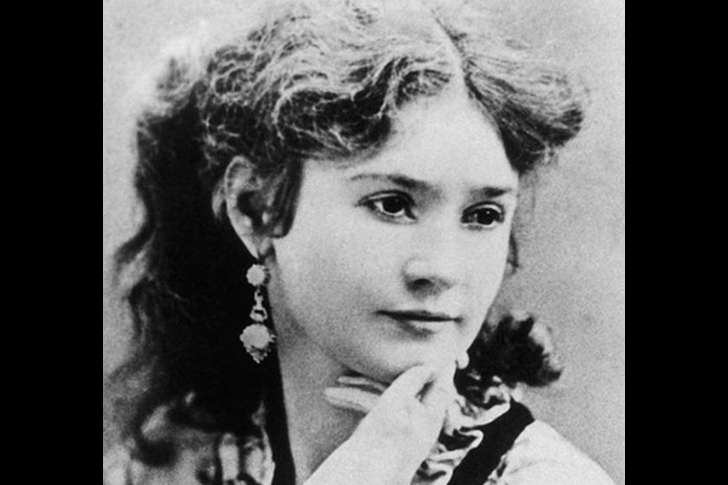
Businesswoman Eleanor Dumont was a professional gambler. In 1854, she arrived in Nevada City in California when she was just about twenty years old. Her real name was Simone Jules but had taken on the name Eleanor Dumont since the Western men were very interested in French women. Dumont opened a gambling parlor which became a success. She served as a card dealer and men went to see her. She was so accomplished to the degree that she opened another one. However, Dumont’s love for gambling eventually took its toll. In September 1879, she committed suicide due to gambling debts.
CHARLEY NEBO AND HIS FRIEND
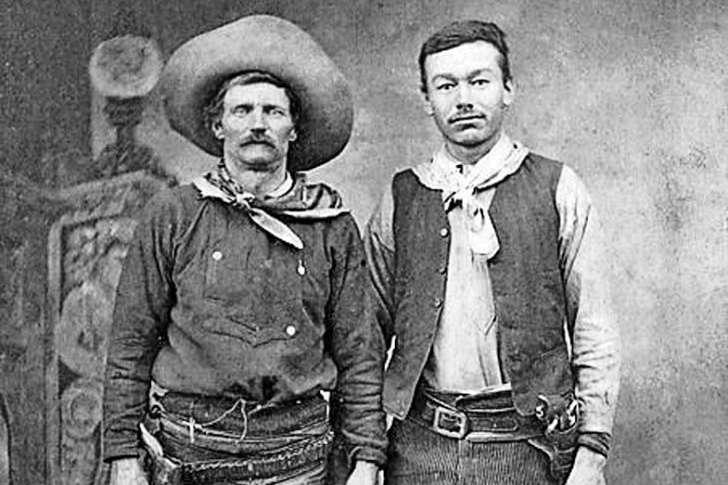
This photo depicts two men, on the left is Charley Nebo and on the right, his friend. Charley Nebo was born in 1842 and arrived in the U.S. from Canada in 1861. Nebo was a cowboy who was credited as a man of many adventures. He had contributed a lot to the Old West by fighting in wars and became part of the Texas Rangers, a group of men who protected settlers from raids by American Indians and enforced laws. After being discharged from the Union Army, he worked in a cattle business, got married, and moved to Willamette Valley, Oregon.
SIOUX GIRL
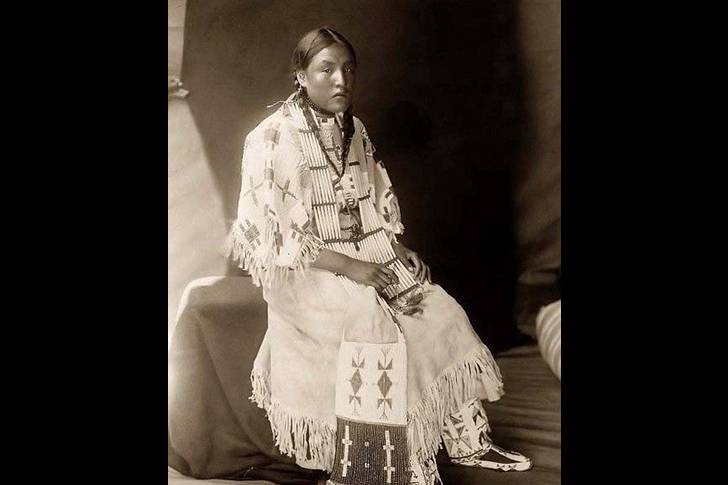
This pretty Native American woman belonged to the Sioux tribe. The name “Sioux” was derived from French and its meaning is “little snakes”. In this tribe, there were gender roles being assigned. Men were credited as the hunters and workers while the women make clothing and manage the household. However, both men and women still have the freedom to decide and agree regarding their duty preferences. In this photo, the Sioux woman wore a ceremonial dress which is usually reserved for occasions or special events. Also, Native Americans identify which tribe a person belonged to from the way he or she dresses.
THE INCREDIBLE CHARLIE
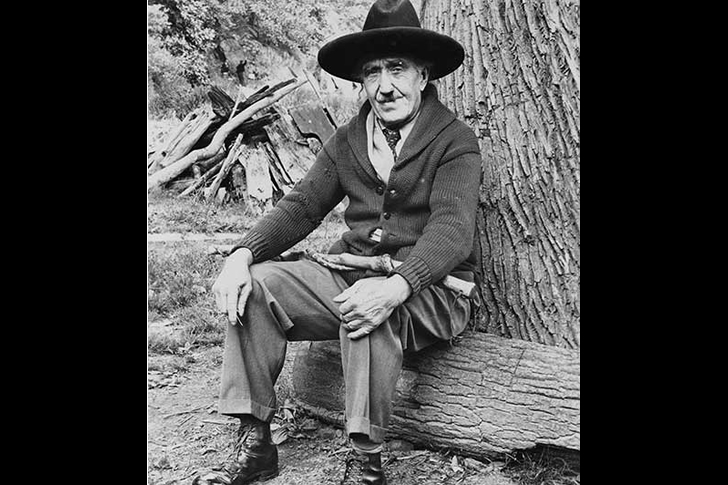
Born in 1950 and died in 1955, Charlie Miller was the last surviving Pony Express rider. Miller learned to ride a horse as a child and became the youngest Pony Express rider at 11 years old. He became part of Buffalo Bill’s Wild West show and was also credited as “Broncho Charlie” since his job was busting broncs for ranchers. Miller had a life well-lived. At age 67, he fought in World War I. At age 81, he delivered letters from New York to San Fransisco while on horseback in commemoration of Pony Express’s anniversary. The trip took 7 months, how incredible!
THE CROW PEOPLE
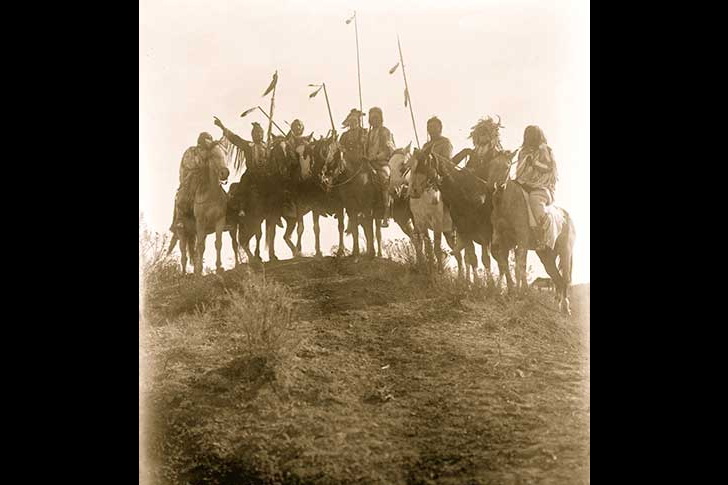
The Crow people in this photo are Native Americans living in Yellowstone River Valley which spreads to Wyoming, Montana, and Idaho. Their tribe name in their own language is Apsáalooke which means “children of the large-beaked bird”. Hence, the English term Crow. Based on records, the Crow frequently changed their territory due to disputes with other tribes such as the Sioux, Cheyennes, and Ojibwe. History shows that the Crow warriors were credited allies for the US Army and fought with them in the Great Sioux War which took place in 1876 until 1877, defeating the Sioux and Cheyenne tribes.
WHILE ON HORSEBACK
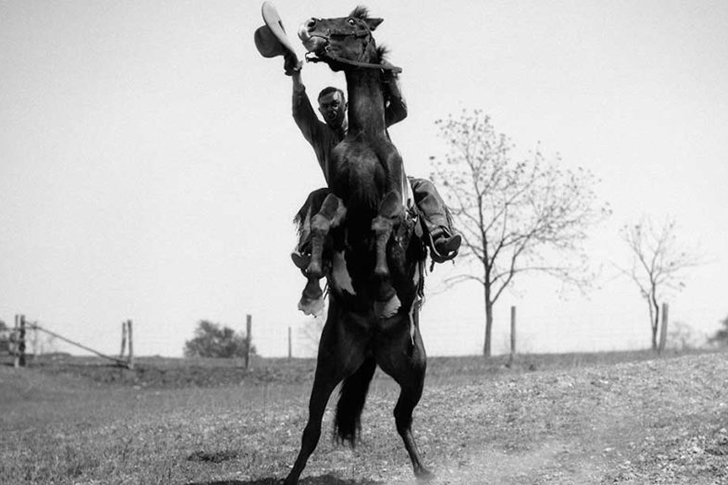
The man in the photo looks like a cowboy, rearing up his horse with a cowboy hat in his hand. Cowboys are a classic in the Wild West. They herd cattle while on horseback and manage the ranch. Ranching was a huge industry back in the Old West, and these cowboys are the ones tending everything in the ranch. There are those who participated in rodeos, which is a competitive sport that tests the skill and speed of the cowboys. The ones who handle animals professionally are called wranglers. Other names credited for cowboys are cowpokes, cowpunchers, cowhands, and buckaroos.
ROSE DUNN
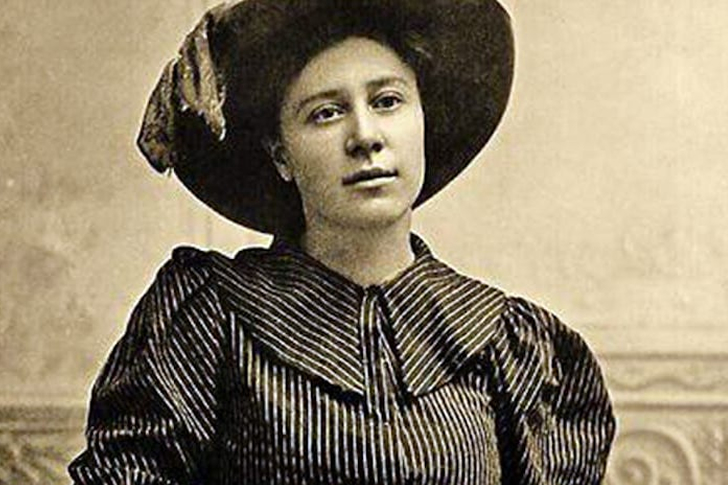
Rose Dunn grew up with her two older brothers who were minor outlaws. Her two brothers taught her to ride, rope, and shoot. When she was either 14 or 15 years old, she was romantically involved with the outlaw George “Bittercreek” Newcomb. Rose Dunn was credited as a woman of beauty and charm. However, she became an accomplice to Newcomb’s criminal activities. In 1895, there was a $5,000 bounty placed on Newcomb. He was about to visit Rose together with a fellow outlaw. But as they stood outside the Dunn house, Rose Dunn’s brothers shot and killed them and collected the bounty.
BRULÉ TRIBE
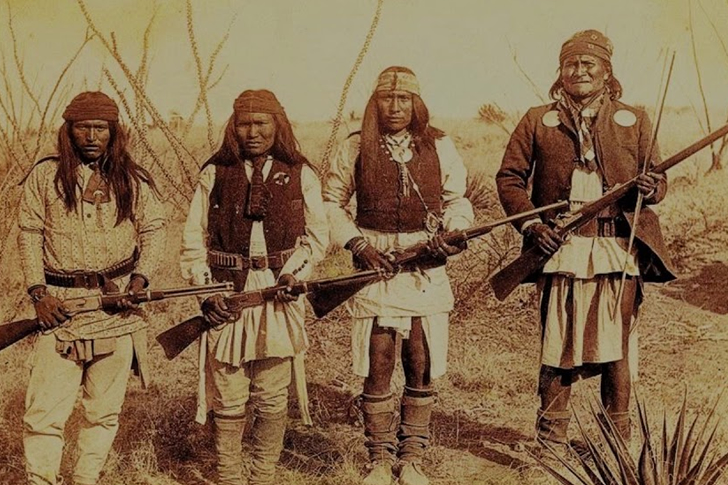
Many groups, including the Native American tribes, used horses as their primary means of travel in the Wild West. This photo shows a group of wandering Native Americans, specifically from the Brulé Sioux tribe. They are called Brulé by the French, meaning “burnt thighs”, and the Americans adopted the term. The Brulé people live in southwestern South Dakota, on the Rosebud Indian Reservation. A number of them also live on the west bank of the Missouri River in central South Dakota, and Pine Ridge Indian Reservation. The Brulé tribe is credited as good hunters of buffalos and wild horses.
VAQUERO
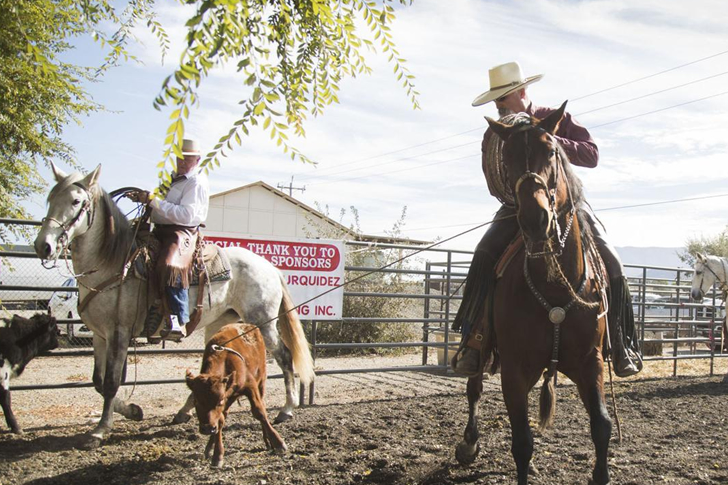
This 1890 photo depicts a Wild West cowboy wearing his signature hat with fringes on his clothes, and carrying lassos. Cowboys originated in Mexico, and the word cowboy is credited to the Spanish word “vaquero,” meaning a person who raises cattle and other livestock. During the 1800s, it was known that numerous English-speaking settlers from the eastern United States migrated to the West and adopted the cowboy culture including their clothing, equipment, and cattle-driving methods. Cowboys also helped care for horses and repaired fences and buildings. The average cowboy in the Old West earned at least $25 to $40 per month.
BUSINESS IN MANHATTAN
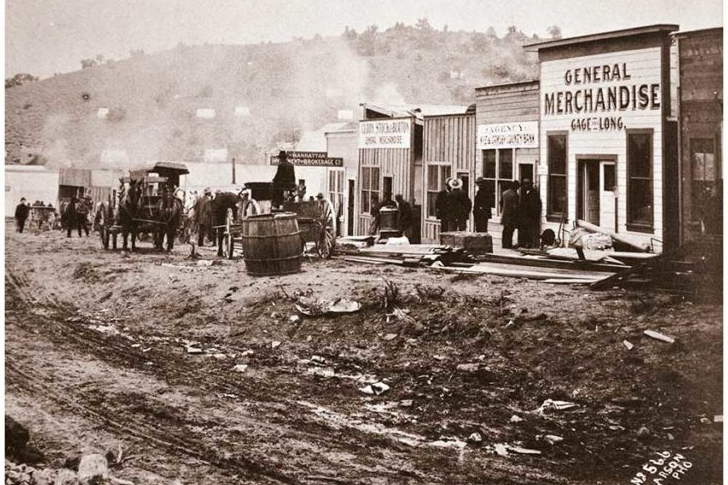
As captioned in the photo, this small town is located in Manhattan, Nevada. The picture depicts the Western people who were in a rush doing business. The people in this small Old West town had an investment in trade and industry, as seen in one of the buildings labeled as general merchandise. The town was originally founded in 1867 due to the silver mining boom. In 1905, there was another influx of population due to the gold rush. Two years after, there was a huge financial crisis in the United States, and it was known as the 1907 depression.
SHOW INDIANS
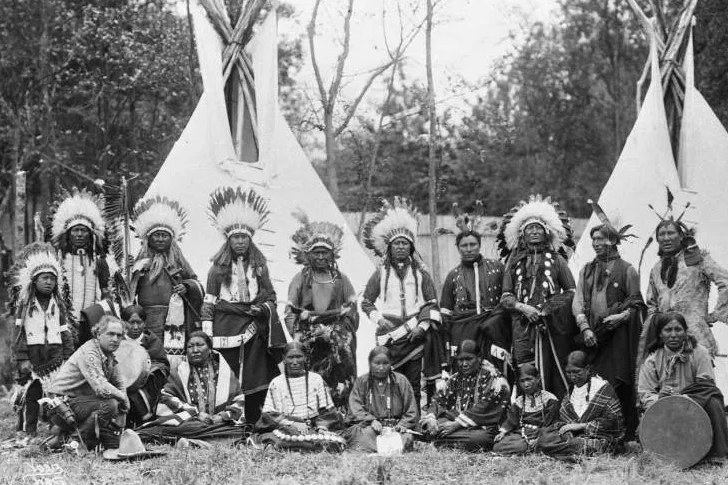
This image shows a group of Indians lining up. They looked as if they’re headed for battle, but they are participating in Buffalo Bill’s Wild West Show. The Native American performers are credited as Show Indians or Wild West Show Indians. The performers reenacted historic battles and events, demonstrated horseback riding, showed their sharpshooting skills with bows and arrows, and performed dances for audiences. The Show Indians also reenacted the Battle of the Little Bighorn including the death of George Armstrong Custer. It was known that Buffalo Bill treated the performers well by providing them wages, food, and accommodation.
LITTLEFEATHER
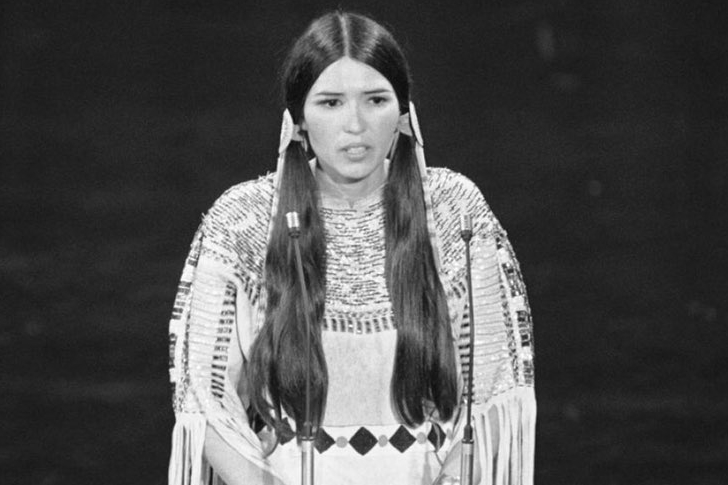
This is Sacheen Littlefeather, who was an Apache actress as well as an activist for Native American rights. On the 45th Academy Awards, Littlefeather represented Marlon Brando to decline the Best Actor award for his performance in The Godfather. Brando, also an activist for the American Indian Movement, boycotted the ceremony in protest of Hollywood’s portrayal of Native Americans and to cause awareness regarding the Wounded Knee standoff. During Littlefeather’s speech, the audience was divided between criticism and applause. She then claimed she was blacklisted by the Hollywood community and later studied to receive a degree in health and a minor in Native American medicine.
PIEGAN GIRL
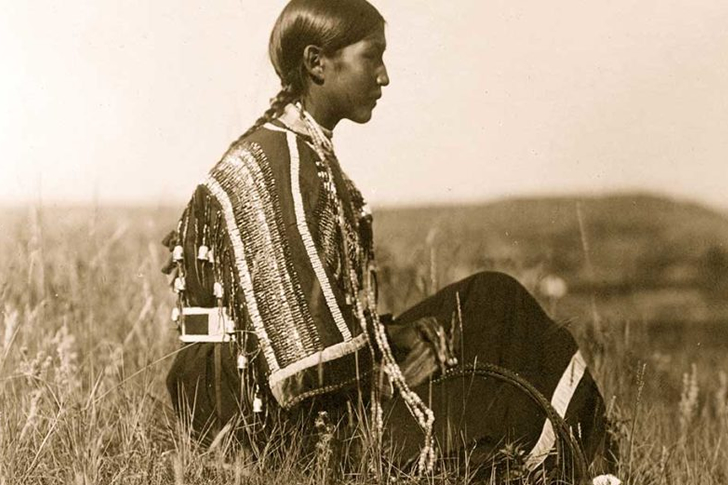
This photo was captured around 1910 and the subject was this teenage woman from the Piegan tribe, wearing their traditional Native American clothes. The Piegan people are also credited as Blackfeet and were from the North American Great Plains. The Piegan tribe is known to be very skillful. They worked well on agriculture, bison hunting, and created beautiful crafts such as clothing, tepee tents, riding equipment, and weapons. However, the Piegan tribe also suffered a lot. Thousands of them died in the 1837 smallpox epidemic, and in 1883, a number of them died of starvation due to lack of food supply.
BUSINESS IN THE WEST
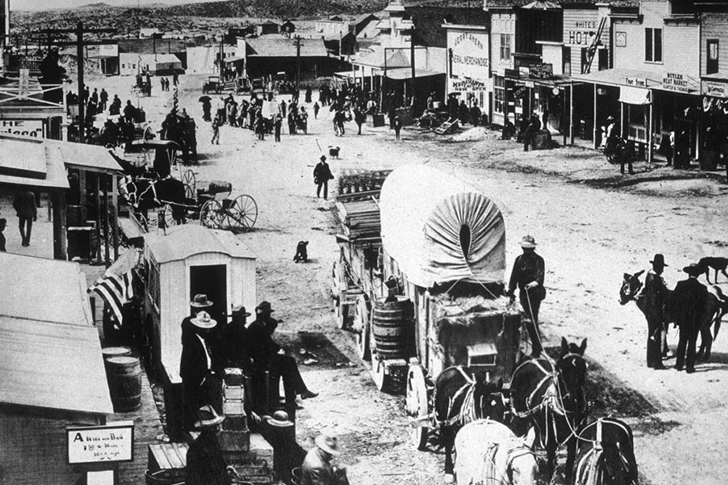
Here we can see a busy town of the Wild West. We see carriages either loading or unloading products for trade. We can imagine what kind of business investments they had a century ago, from agriculture to gambling businesses, but one that stood out from the rest was fur trading. People from the West participated in trading beaver fur and other skins for shipment to Europe. Beaver fur was one of the most used fashion clothing and one of the most expensive as well. However, in 1830, the fashion style changed and beaver hats were replaced by silk hats, ceasing the demand for expensive furs.
BUFFALO BILL’S WILD WEST SHOW
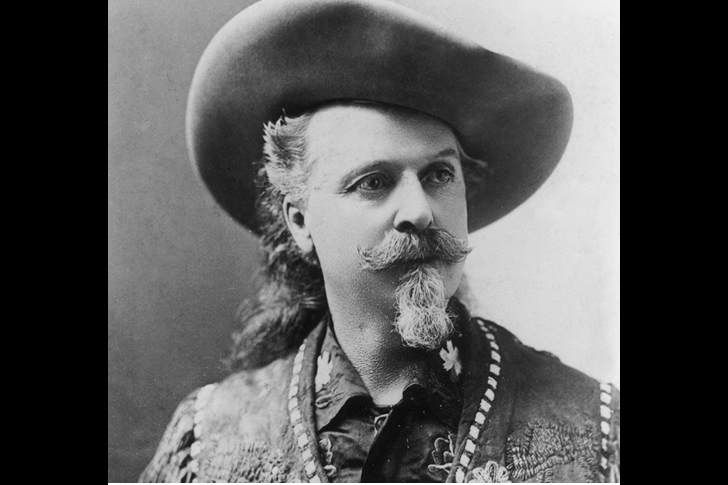
The popular and long-running Wild West Shows was credited to William Frederick Cody, better known as Buffalo Bill. Buffalo Bill began working at a young age as a rider for the Pony Express. When he was 23, his legend became widespread. He founded Buffalo Bill’s Wild West Show in 1883. It was a traveling show going around the United States and Europe. The show held a variety of entertainment such as rodeo events, reenactments of historic events, shooting exhibitions, and dance performances. At the peak of its success, the Wild West Show reached as many as 1,200 performers.
DEADWOOD
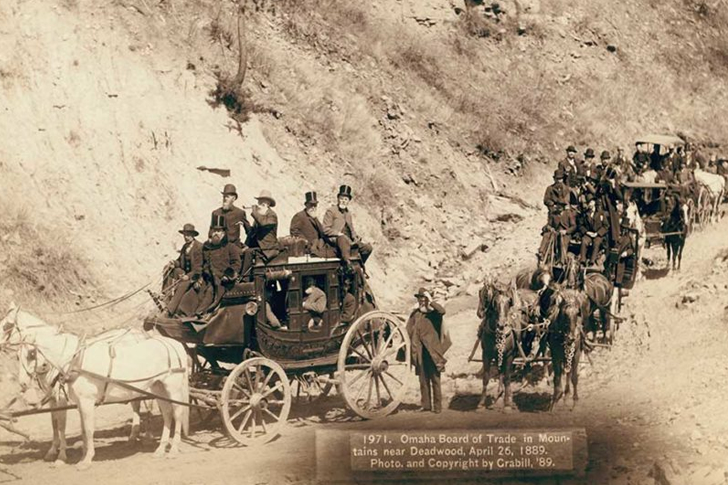
This photo was captioned Omaha Board of Trade in the mountains near Deadwood, South Dakota. This was photographed by John C.H. Grabill. The procession of stagecoaches on a mountain road carried the passengers that were part of the Omaha Board of Trade. The board of trade’s responsibility was likely to oversee the trading industry and business investments in Omaha. Some examples of trade in the Wild West include agriculture products, fur and cattle, and dry goods which were carried in wagons. The location in this photo, Deadwood in Dakota, was the inspiration behind the HBO western series entitled Deadwood.
FRIENDSHIP
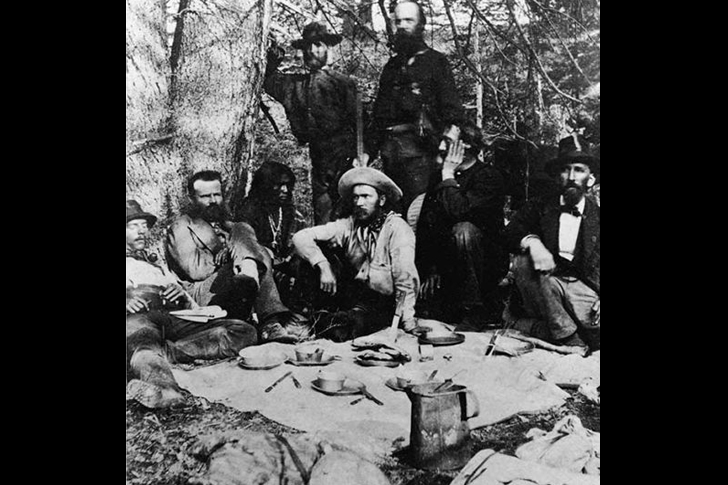
The depiction of media and entertainment is that Native Americans and the West settlers always fight. It might be true in some situations, but in this picture, it seemed as if they’re one big family sharing a meal. It was possible for both Western people and Native Americans to get along and work together. To see them sit down together and maybe take a rest brings us back to their historic friendship. The degree of trust they have for each other led them to go on expeditions together. The Native Americans served as the cowboy’s guide along the Wild West.
ANNIE OAKLEY
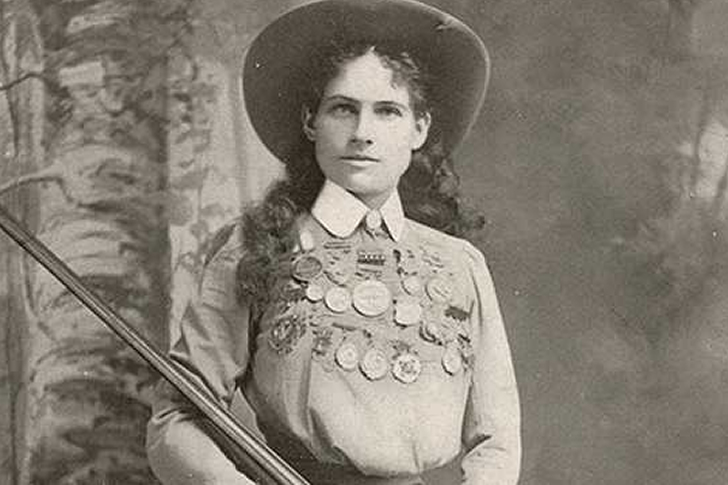
Phoebe Ann Mosey, or popularly known as Annie Oakley, was a sharpshooter in the Wild West. She was a superstar since she was one of the few females who were very skilled with guns. Credits to her talent, she was invited by Buffalo Bill to perform in the Wild West show. She married Frank E. Butler who was also a skilled shooter and performed with her on Buffalo Bill’s show. In 1902, Annie Oakley pursued a career in acting. Sad to say she suffered a blood disorder known as pernicious anemia and died in 1926 at the age of 44.
CIRCLE THE WAGONS
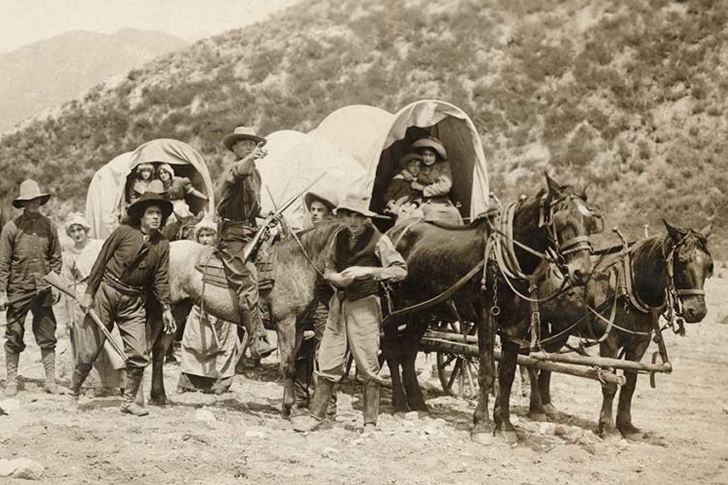
This phrase was very popular in the Wild West. It is a metaphor that means to unite together to fend off an impending attack. This phrase was commonly used a century ago since the degree of threats against the Native Americans grew high. Especially for travelers, there were some incidents that they were being ambushed by the different Indian tribes who were very territorial and defensive of their land. As seen in this photo, it looked like several families from the West were wandering or migrating to another land. The men on the front were positioned on the defense.
WESTERN WEAR

People from the Wild West are often credited as wearing cowboy clothing. But how did it transpire? Western wear is actually inspired by different generations of settlers in the Old West, from pioneer, mountain man, cowboy, and vaquero. The men’s and women’s clothing can be formal or informal, depending on the occasion and their preference. Western wear usually comprises a cowboy hat, a shirt, a coat, trousers, a leather belt, neckwear, and boots. For women, they wear prairie skirts and dresses. To this day, Western people still adapted their cultural wear. Even though it looks modern, at least the traditional wear is still passed on.
WESTERN SALOON
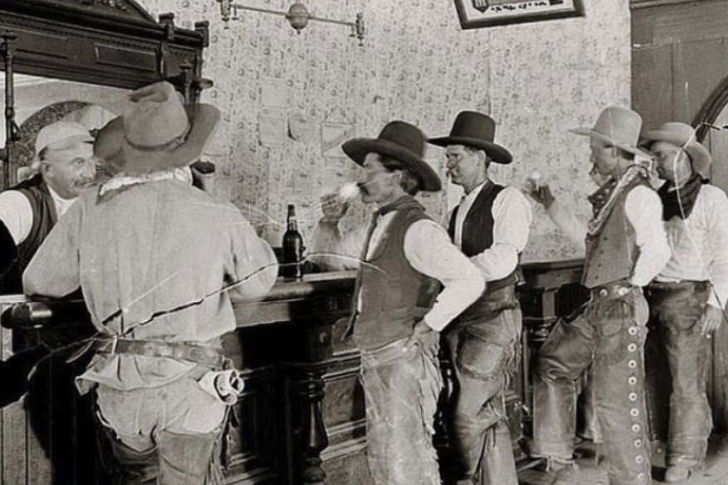
Western films always display cowboys either drinking in bars or getting involved in a gunfight. But this vintage photo here is proof that the Wild West men do love to feast on drinks. Their bar was usually credited as a saloon. The Western saloon served customers such as gamblers, cowboys, soldiers, businessmen, and lawmen. In 1822, the first saloon of the Wild West was established at Brown’s Hole, Wyoming. The saloons also offer different entertainment such as dancing girls, gambling, billiards, and darts. To this day, there are several existing saloons that were built in the late 1800s that are still operating.
TEXAS JACK
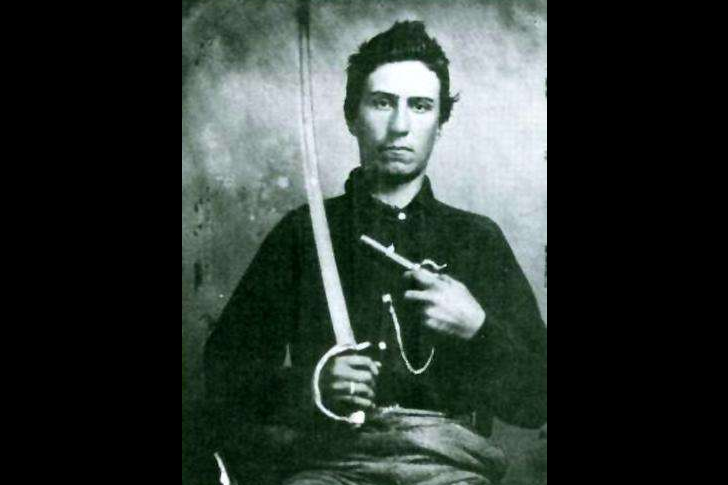
John Wilson Vermillion, better known as Texas Jack, was a reputed gunfighter in the Wild West. He moved from Virginia to the West after the Civil War. He was credited as “Shoot-Your-Eye-Out Vermillion” because it was a popular story back in the day of a person that shot someone straight in the eye. Texas Jack was appointed as a city policeman in 1881 to help in the Tombstone fire. He also helped run after cowboys who were outlawed. In 1890, Texas Jack returned to his town Virginia and lived near the town of Big Stone Gap. He worked there as a Methodist preacher.
JESSE JAMES (AGAIN)

The outlaw Jesse Woodson James was the most famous member of the James-Younger Gang. The James–Younger Gang was notorious in the 19th-century which was based in Missouri. The members were the James brothers (Jesse and Frank), Younger brothers (Bob, Cole, John, and Jim), John Jarrett, George Shepherd, Arthur McCoy, William McDaniel, Charlie Pitts, Oliver Shepherd, Tom McDaniel, Bill Chadwell, and Clell Miller. The group robbed banks and murdered people. However, in 1876, the robbery gang got dissolved when the Younger brothers were captured. Jesse James later organized a new gang until his fellow gang member Robert Ford shot and killed him.
MAIMAN FROM MOJAVE TRIBE
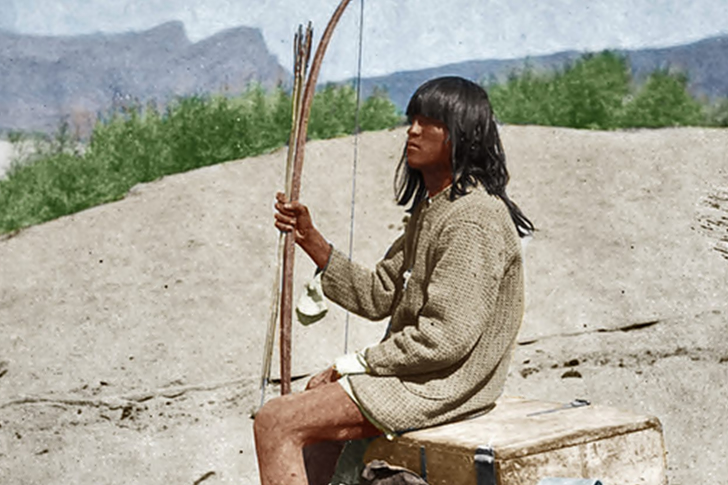
The photo shows a Native American guide and interpreter named Maiman, who belonged to the Mojave tribe. The photograph was credited to Timothy O’Sullivan and taken in the Colorado River (now the U.S. states of Arizona and California). Maiman was accompanying O’Sullivan to places where the latter can capture great photographs. Aside from being friendly to the Western settlers, Mojave tribes are also known for being good in farming, fishing, and hunting. Mojave men and women were known to farm together. The men planted the crops while women harvested them. Aside from food crops, they also grew hemp, tobacco, cotton, and medicinal plants.
THE ROUND-UP
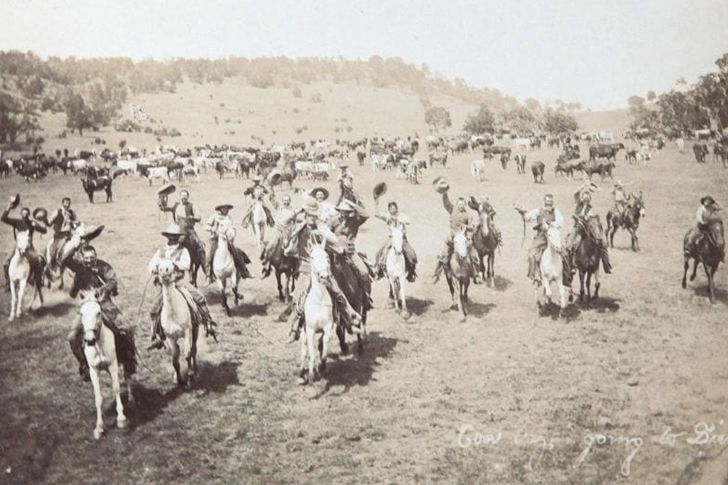
Here’s a picture of several cowboys rounding up cattle. The round-up is usually performed twice a year either for the animals’ health purposes, the shearing of sheep, or for branding animals (marking livestock to identify the owner). The cowboys herd the animals while on their horseback. Rounding up or herding animals was an essential job in the Wild West since the land is surrounded by numerous ranches. The ranching and livestock industry in the Wild West grew faster at that time. Some ranchers also raise bison, ostriches, and alpacas, depending on the culture. This photo is again credited to photographer Timothy O’Sullivan.
TRAIN THEM YOUNG
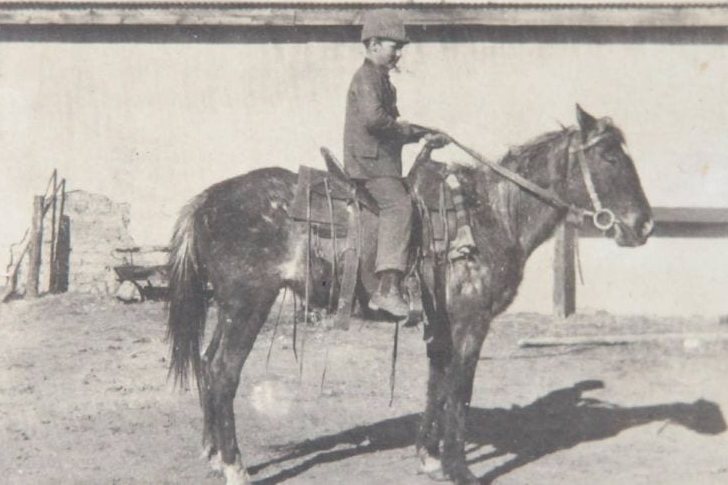
Children in the Wild West were exposed to horseriding and things in the ranches. So it is no question how they started young as cowboys or how they dream to be one. In the West, most ranches and business investments were run by the family. The popular phrase “train them young” would be the perfect caption for this photo. During this era, it was the norm for families to train children in the business. The sooner you learn to ride a horse, the sooner you can contribute. The word “cowboy” began in the early 19th century and originated from the Spanish word “vaquero”.
NEW MEXICO
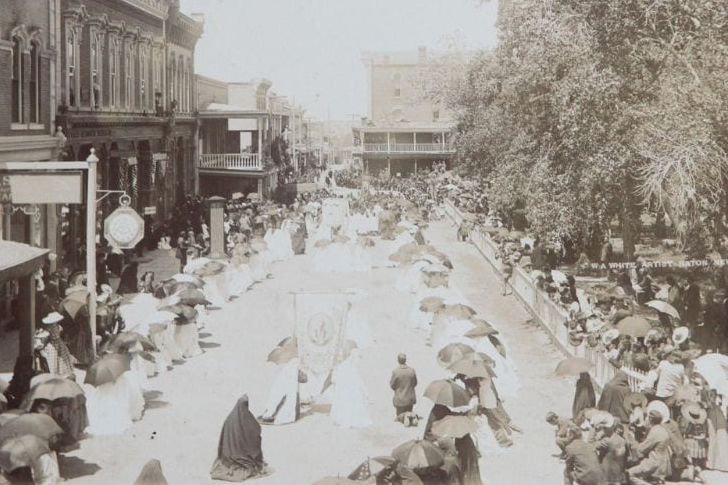
There were several new towns being established in the Wild West as more and more settlers arrived, but the town of New Mexico has a story to tell. It was colonized by Mexico and had Spanish and Native Americans settlers. In 1846, the United States declared war versus Mexico and the U.S. General later declared New Mexico a U.S. possession. In this photo, we see people having a parade and enjoying a festive celebration. It may be credited to a spiritual feast as some of them were kneeling, but we know it was a hot day because of the sea of umbrellas.
BROKE
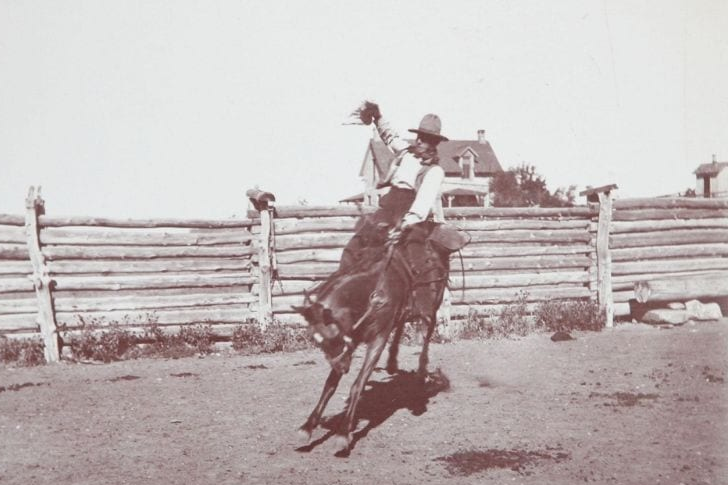
We picture out the Wild West not only with a lot of cowboys but also horses. Horses were an everyday thing for the Western settles, as this was the only means for travel within the town. However, not all horses wanted to be ridden. There are some that would require horse breaking. The term “broke” is widely used by cowboys, which means that the horse is trained and understands the rider’s basic movements, and later let themselves be ridden or harnessed. This required the rider’s investment of time, patience, and skills. Well, without the horses, these riders can’t go to their destination!
MEXICAN BAKE OVEN
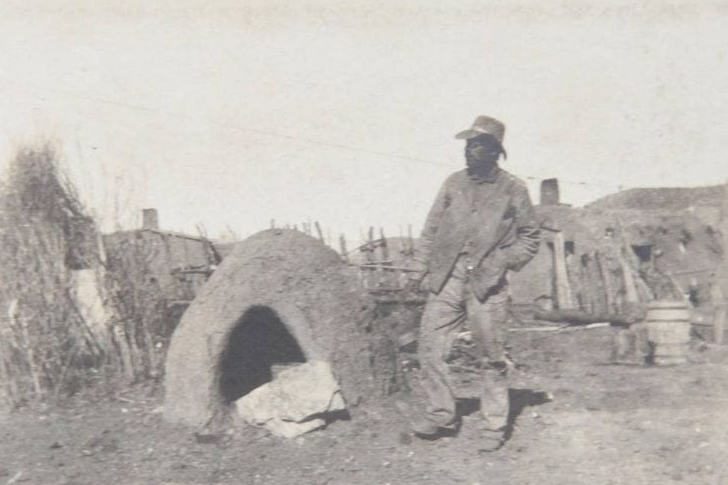
In this photo is what we call a Mexican bake oven, which is similar to a horn, a mud adobe-built oven used outdoors by settlers of the Wild West including the Native Americans. Horno is credited as a Spanish word meaning “oven” and has a beehive shape. These ovens allowed people to cook using several methods such as baking bread and making stews. It is still used today in New Mexico and Arizona, bringing traditional food from one generation to another. It works by building a fire inside and then depending on the food, there are different cooking techniques in using this bake oven.
STEAM TRAIN
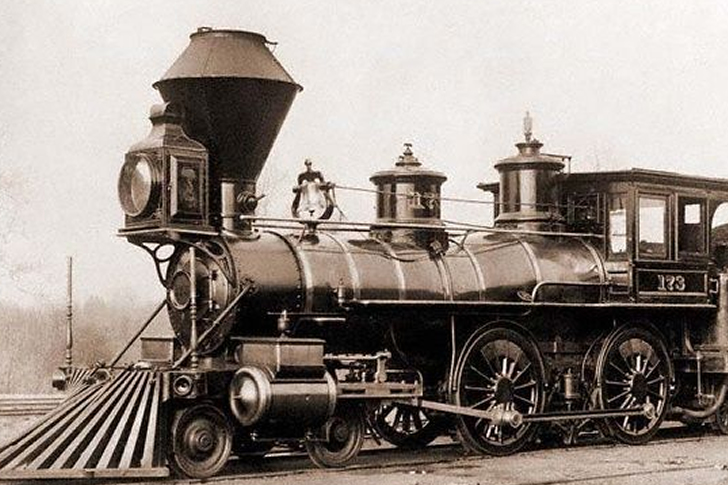
Wild West was popular in the old days for their railway transport vehicle credited as steam trains. The stream trains function by producing traction through a steam engine that uses wood, oil, or coal to produce steam. The steam moves the compressors and pumps that are connected to the wheels. These railway trains have contributed a lot to the Old West, either for business, work, or leisure. It also allowed people to build a new life in different parts of the country. The first-ever steam train in America was built by Peter Cooper in 1830 and it was called Tom Thumb.
WAGONS AND HORSES
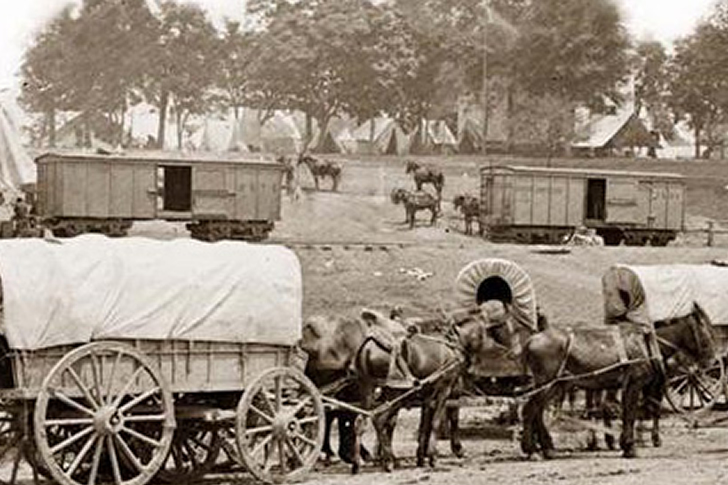
The Wild West had a booming trade and industry for a time. As mentioned, their business investments include ranching, fur clothing, agricultural goods, and a lot more. Since there were no trucks yet that could carry a heavy load, they had to use a number of wagons and horses to transport the goods. The cowboy in the photo seems to be carrying a mountain of trade products to be delivered. His effort of going back and forth was really challenging. Life may be tough during those times, but we owe it to them for the innovations that they have contributed.
BRANDING THE HORSE
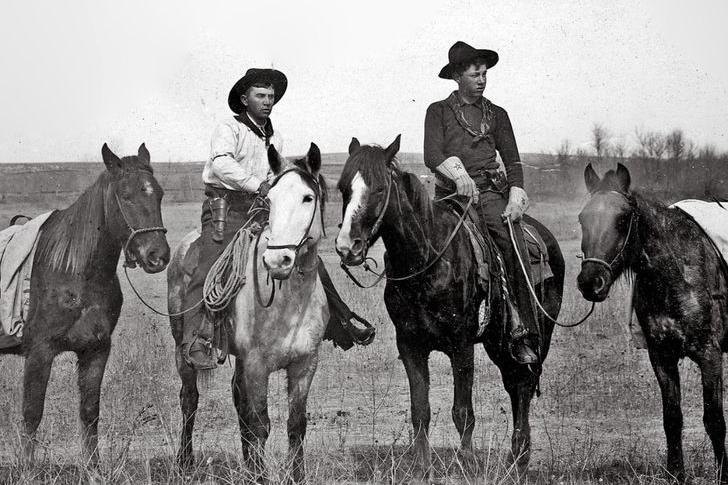
The Wild West had vast livestock back in the day, and we cannot imagine a cowboy without a horse. Horses were high in demand since they were used for leisure, for transportation, and during the war. Due to a large number of horses, cowboys had to mark them (especially during round-up) so they can identify their owners. Marking was also credited as branding. A century ago, cowboys brand horses using branding iron heated on the fire then pressing it onto the horse’s skin. Nowadays there are several new horse branding techniques to include microchip implant, freeze branding, and earmarking.
KITTIWINK THE HORSE
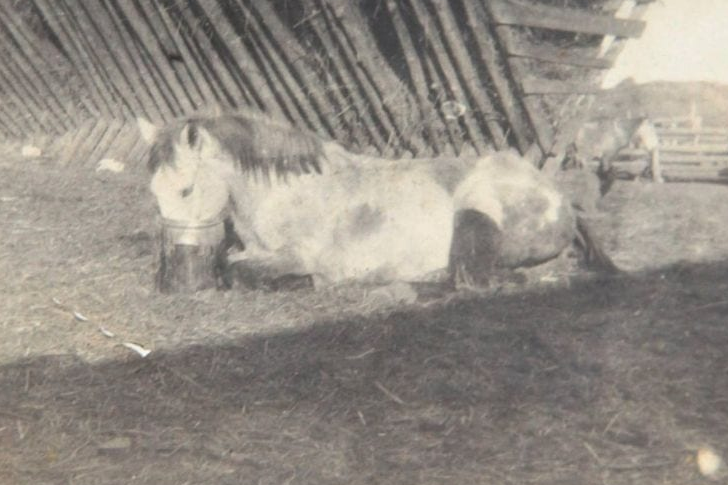
This white horse’s name is Kittiwink, as written on a note behind this photo. Kittiwink must have been so hungry that it looked busy feeding himself on the pale. Horses were cowboys’ best friend in the Old West, as they have been a companion and a form of transportation and leisure to them. There are several breeds of horses in the Old West that vary in purpose, and some examples are Tennessee Walking Horse and Missouri Fox Trotter. The Missouri Fox Trotter is credited to travel long distances at a speed of at least five miles per hour, making it the sheriffs’ favorite.
DONKEY
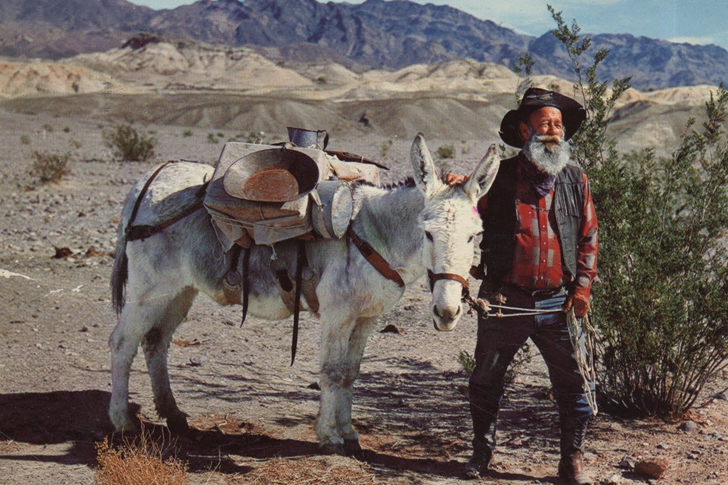
Aside from horses, donkey played a huge role in helping cowboys in the Old West, too. In this photo, this donkey carries piles of wood. We can assume that the owner and his donkey must have gathered wood to use in the fireplace, for construction, or for fixing the man’s house. For nearly 5,000 years, the donkeys have given assistance to humans both in transport and agriculture. Credits to their small size and quick instinct, donkeys were also used in the war to rescue wounded soldiers and to carry gear, explosives, and supplies. Also, they are friendly animals!
BORAX AND THE TWENTY-MULE TEAM
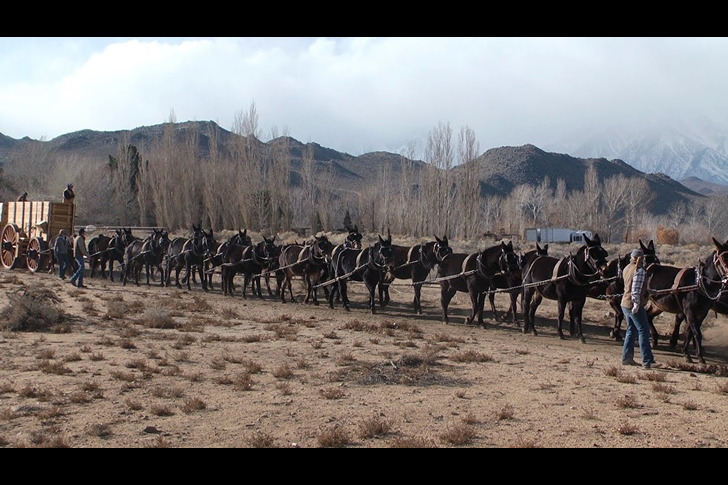
Borax was a huge business in the Wild West for thousands of years. During the gold rush in 1848, borax powder was utilized in the gold extraction process. This image captured in the 1870s depicts the twenty-mule team (eighteen mules and two horses) which was designed to transport borax out of Death Valley in California from 1883 to 1889. Its capacity was to carry 9 metric tons of borax at a time. The Twenty-mule team was credited to Francis Marion Smith, an American miner who founded Pacific Coast Borax Company. He was dubbed as “The Borax King”.
BLACK ELK AND ELK
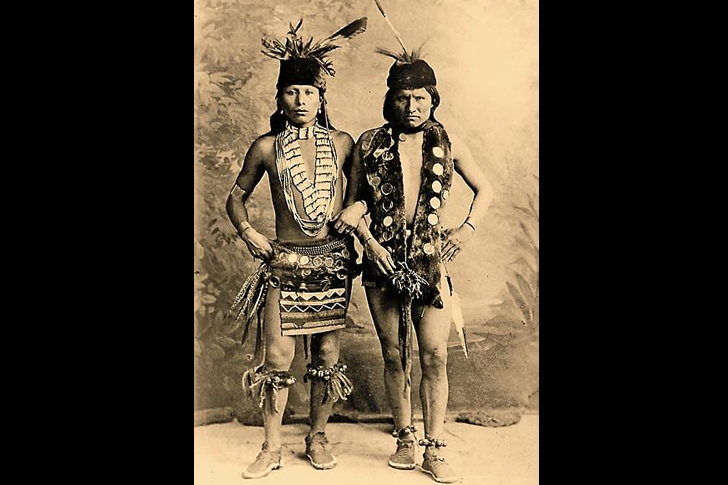
Black Elk and Elk were both Show Indians who performed in Buffalo Bill’s Wild West Shows and other similar shows. In his time with Buffalo Bill, Black Elk performed for Queen Victoria for her Golden Jubilee in 1887. They called the Queen, “Grandmother England” at that time. The Show Indians were credited for their reenactment of historical events, their sharpshooting skills with bows and arrows, demonstration of horseback riding, and dance performance. However, Black Elk was no ordinary show Indian, he also fought in the Battle of Little Big Horn in 1876 and Wounded Knee in 1890.
BILL ANDERSON
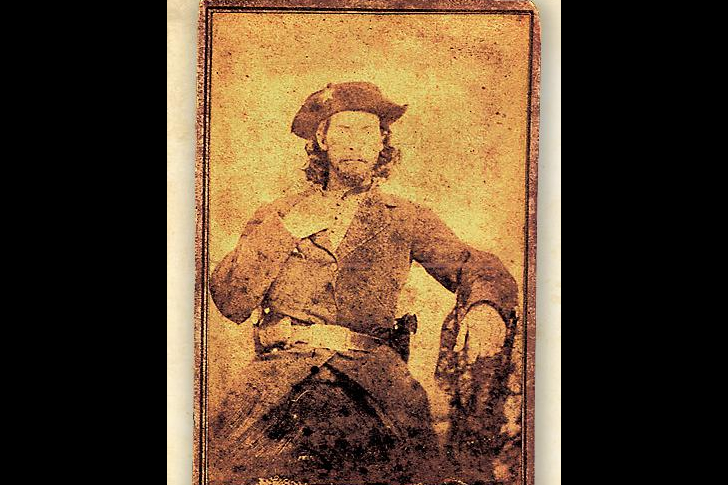
This small photograph, also called carte de visite, is credited to photographer Andre Adolphe Eugene Disderi. His subject was found in the Wild West outlaw Bill Anderson, one of the notorious pro-Confederate leaders in the American Civil War. He also led volunteer rangers who attacked and killed Union soldiers in Missouri and Kansas, to avenge the death of his father who was killed by a Union loyalist judge. Anderson was involved in horse trafficking as he was known to steal horses and reselling them in different parts of the country. In 1864, he was killed by Union military leader, Lieutenant Colonel Samuel P. Cox.
CHARLES SIRINGO
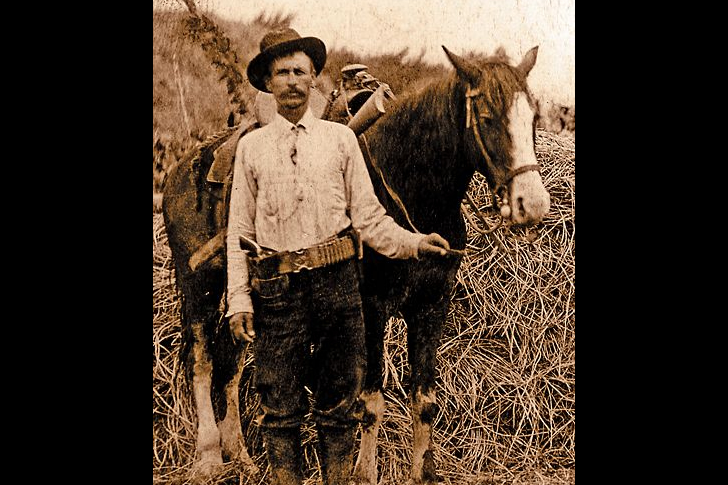
Charles Siringo was an American detective in the Wild West. Beside him in this photograph was his partner, W.B. Sayers. This photo was captured between 1899 and 1900 when the pair infiltrated the Wild Bunch. Siringo’s 1912 book entitled “A Cowboy Detective” mentioned his partner. For this instance, he changed W.B. Sayers’ name to W.O. Sayles and wrote that he worked alongside him. Siringo would often change the names in his book to hide and protect the identity of his subjects. As an agent for Pinkerton National Detective Agency, Siringo was assigned to work in Alaska, Mexico City, and Denver.
QUANAH PARKER
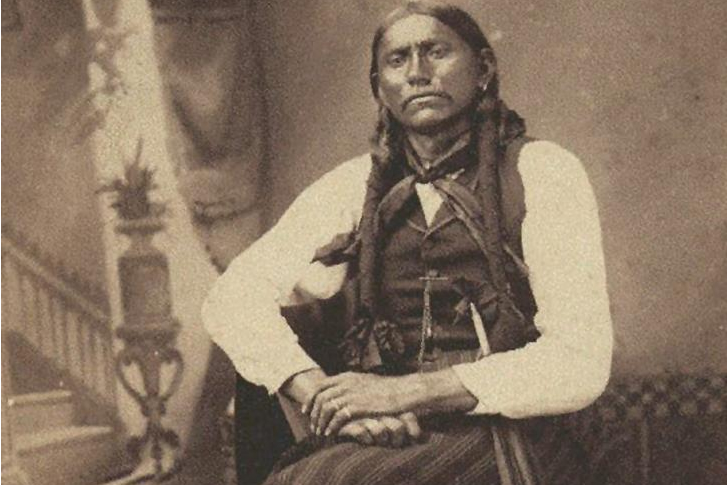
Quanah Parker was the son of Comanche chief Peta Nocona and Anglo-American, Cynthia Ann Parker. He was abducted and assimilated into the Nokoni tribe. In 1871, he became a war leader in the Red River War, a military campaign launched by the US Army to displace Native American tribes from the Southern Plains to the Indian Territory. He was appointed the chief of the entire Comanche Nation by the federal government. Aside from being the chief, he was also a rancher. In 1911, Parker died and was buried at Fort Sill. He was credited with the “Last Chief of the Comanche.”
CATTLE DRIVES
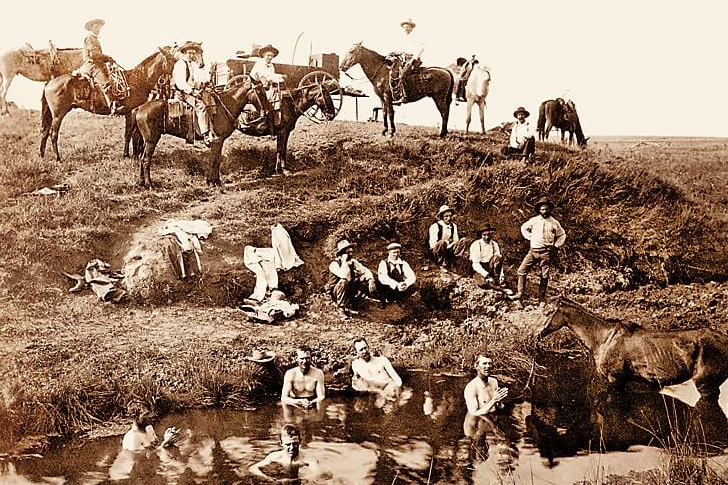
Cattle drives took a lot of time and were a popular activity in the Old West. In detail, cattle drives take three months at a time. Due to the booming cattle industry and rise of business investments between the 1850s to 1910s, millions of cattle were driven from Texas to as far as Kansas. Then the shipment took place in the east, specifically in Louisiana. Imagine how challenging it was for the cowboys! This photo captured shows bathing cowboys after a long, tiring day of work. Good to know they’d find the time to refresh and relax even just for a little while.
PHOTOGRAPHY
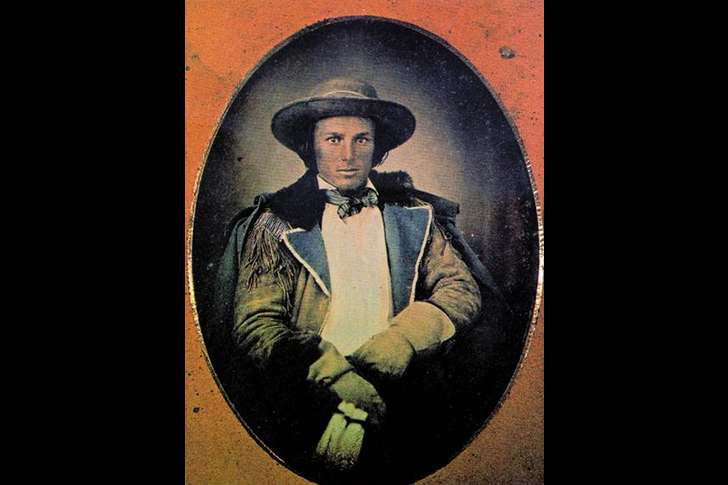
This photo may lack details as to who this dapper man in the cowboy suit is, but this indeed sparks our interest and curiosity. This was captured during the Wild West era in the 1850s when different photography styles were discovered. This was called a daguerreotype, credited to the inventor and photographer Louis Jacques Mandé Daguerre. The daguerreotype is the technique where an image is printed on copper plates with a coat of silver without the use of a negative. There was also another technique that was discovered which was called the ambrotype, where the photo was printed on a glass plate.
EMIGRANTS
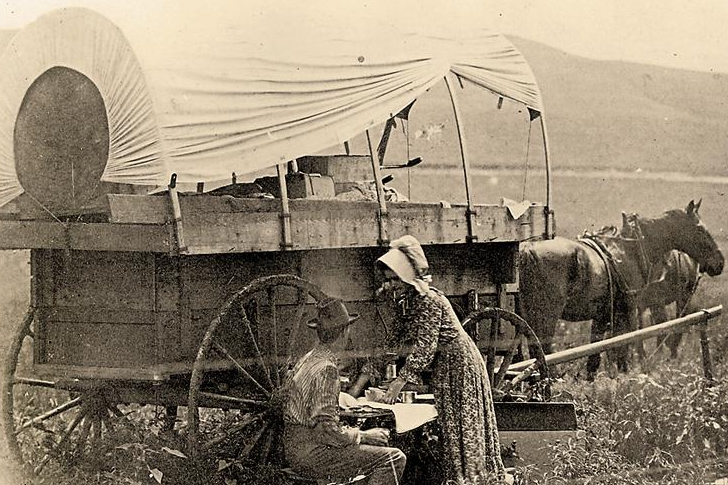
Life in the Wild West consists of cowboys, horses, ranches, gambling, gunslingers, and a lot more. This may usually be the portrayal of the western era in the media today, but photos like this one show the real life of settlers. Back in the day, experiencing danger was inevitable. There were threats as numerous outlaws were on the rise to the degree that settlers emigrate to different towns or a less civilized place. In this photo are husband and wife, possibly migrating to another area but took a break in Greenwood County, Kansas to eat, and loosen up.
TYPICAL FRONTIER COWBOY
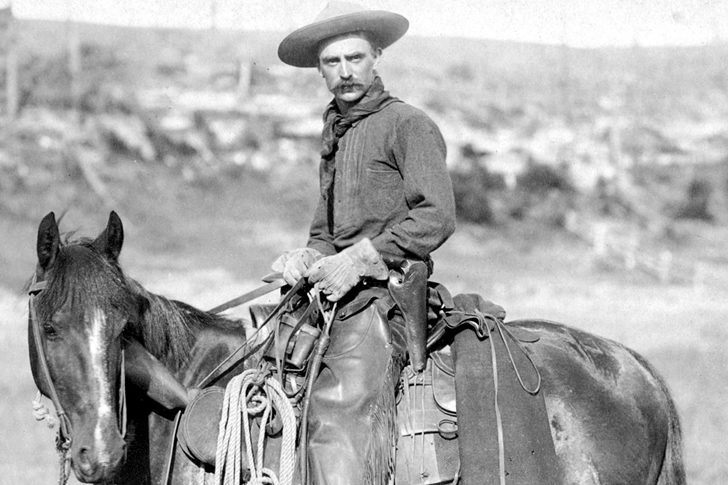
This image was featured in an 1871 newspaper article in Kansas. It described the typical frontier cowboy outfit, “a flannel shirt with a handkerchief encircling his neck, butternut pants and a pair of long boots.” Indeed, this man in the photo is a typical cowboy. Also, most cowboys are seen in their signature ten-gallon hat, fringes on coats and trousers, leather belt and boots, and carrying lassos. Cowboys actually originated in Mexico, and the word cowboy is credited to the Spanish word “vaquero”, which means animal herder. The average cowboy in the Old West earned at least $25 to $40 per month.
TEXAS JOHN SLAUGHTER AND COWBOYS
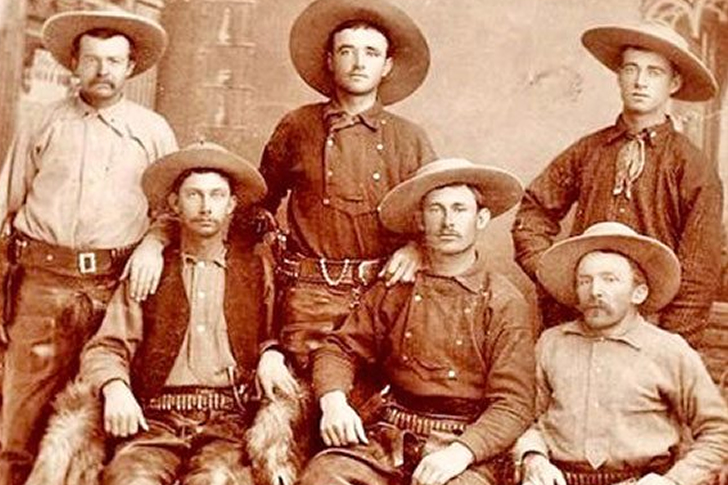
This portrait depicts a group of cowboys identified as Texas John Slaughter and his workers. It was captured in 1885. Slaughter was a cowboy, lawman, and rancher in the Southwestern United States. He was a Texas Ranger and defended settlers against dangerous Native American tribes. He served the Confederate States Army during the Civil War and battled in Comanche and Apache Wars. He also captured outlaws in the New Mexico and Arizona territories. Slaughter also had a business investment called San Antonio Ranch Company, a cattle-transporting company. He also established a ranch in Arizona before being elected sheriff of Cochise County.
BAT MASTERSON AND WYATT EARP

We have mentioned infamous outlaws but here are two prominent lawmen in the Wild West history named Bat Masterson and Wyatt Earp. Masterson gained fame as a sheriff and gunfighter in Dodge City and was known for his successful shootouts. While Earp was credited as a tough U.S. Deputy Marshal known for his participation in the gunfight at the O.K. Corral. Wyatt Earp formed a commission to fight against the notoriety and to bring law and order in Dodge City. The commission was composed of gunfighters including Bat Masterson. They were called the Dodge City Peace Commission in 1883.
APACHE
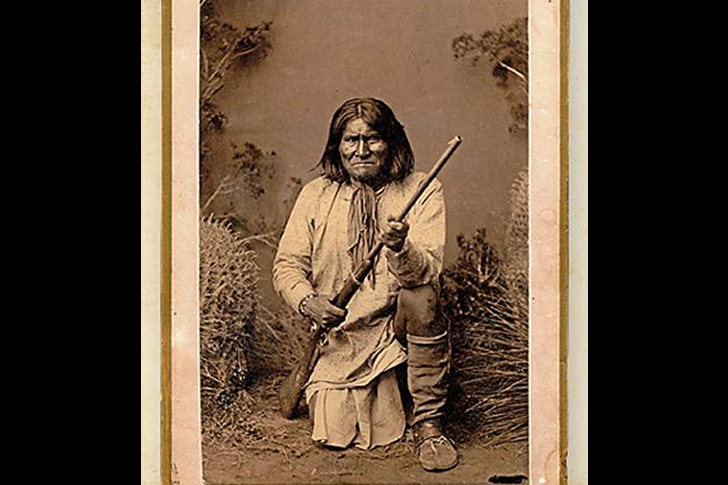
This is a photo of Geronimo, believed to be photographed in 1884. Geronimo was a popular icon in the Wild West era. He was an Apache leader and a respected medicine man. He led Apache families against the Mexican Army and resisted being sent to reservations by the U.S. government. However, he surrendered in 1886 and was transferred to many different areas in the U.S. In a world fair in 1904, Geronimo sold pictures of himself and souvenirs. Towns in Arizona, Texas, and Oklahoma are credited to his name. His life story was also adapted into film and books.
INDIAN POLICE

This is a photo of two Show Indians seated with Buffalo Bill. The Native Americans, credited for their savage and wild ways, agreed to abide by the rules and regulations of the Wild West Company which led to the creation of the Indian Police. The Indian Police were assigned to enforce the rules and to maintain peace and order among the performers and prevent fights. The usual ratio was one police for a dozen Indian performers, and these policemen were given badges and paid $10 every month. In 1898, there were two leaders of Indian Police – Chiefs Iron Tail and Short Man.
NATIVE AMERICAN WOMEN
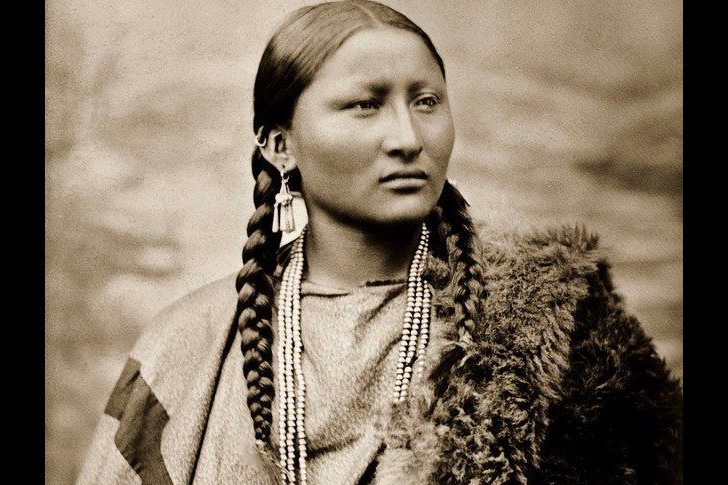
The Native American men and women’s responsibilities were well-defined. Men do the hunting, traveling, and become blacksmiths, while women do the child-rearing, managing the household, and making clothing. In this photo is actress Barbara Rush, who portrayed a Native American woman in the 1954 film Taza, Son of Cochise. The film involves the end of the Apache Wars but resurged again after disputes within a family. Hollywood often portrays Native American women in such a romantic and carefree way, but the truth is, they have responsibilities to fulfill. More than just housewives or mothers, they are credited to be warriors too.
ANNUAL HORSE SHOWS
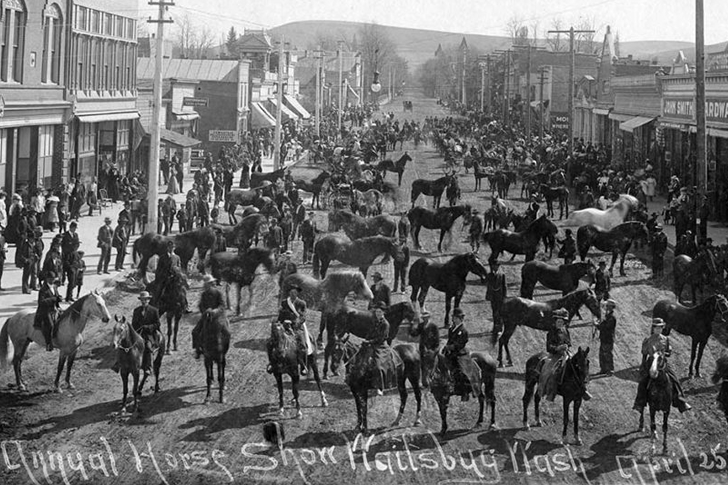
Cars and trucks were not available in the Wild West back in the day, and their means of transportation within the vicinity were limited to horses. Before car shows were on the market, there were also horse shows. This photo pretty much describes it. Horse shows took place every year in different towns including in Waitsburg, Washington. Horse shows are credited to cowboy stunts and horses performing a variety of disciplines. The highlights would usually include trick-riding, sharp-shooting, and horse to carriage transfers. Whoever impresses the audience and panel the most, wins. To this day, it is still being practiced in many places.
MADAME MOUSTACHE, THE GAMBLER
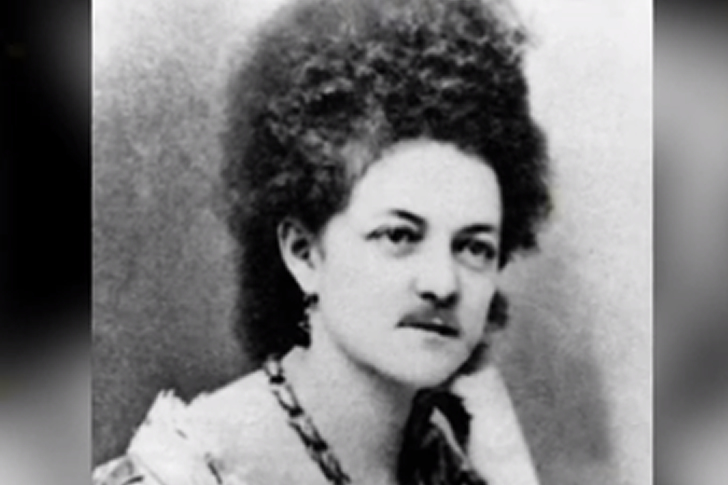
Madame Moustache was a beauty icon in the Wild West. Not only that, she was credited as the most notorious blackjack dealer and gambler. Her real name is Eleanor Dumont. It was reported that she was from France, but she worked in different places such as California, South Dakota, Nevada, and Arizona. She gained experience while working and established her own gambling parlor named Vingt-et-un. However, she fell for a conman who took all her earnings. She got back on her feet, moved from city to city, then put up another business, a brothel. Madame Moustache then became very wealthy.
THE WOMAN WITH THE BLUE TATTOO
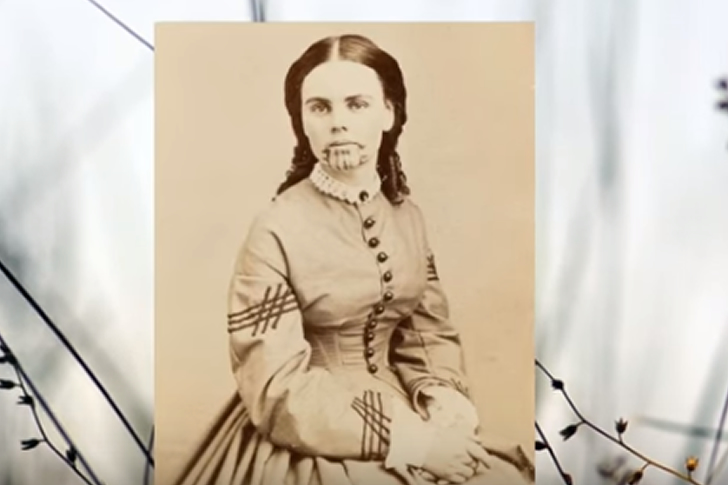
Olive Oatman was abducted more than a century ago in the West. She was traveling with her family to look for a place to settle. However, it turned into a tragedy as the entire Oatman family was murdered by Native Americans. The two sisters, Olive and Mary Ann, survived. They were held captive and became slaves to the Yavapai and were later sold to a group of Mojave in exchange for horses and vegetables. Mary Ann later died of starvation. The blue tattoo on Olive’s chin was a symbol of the tribal tradition of having a good afterlife.

